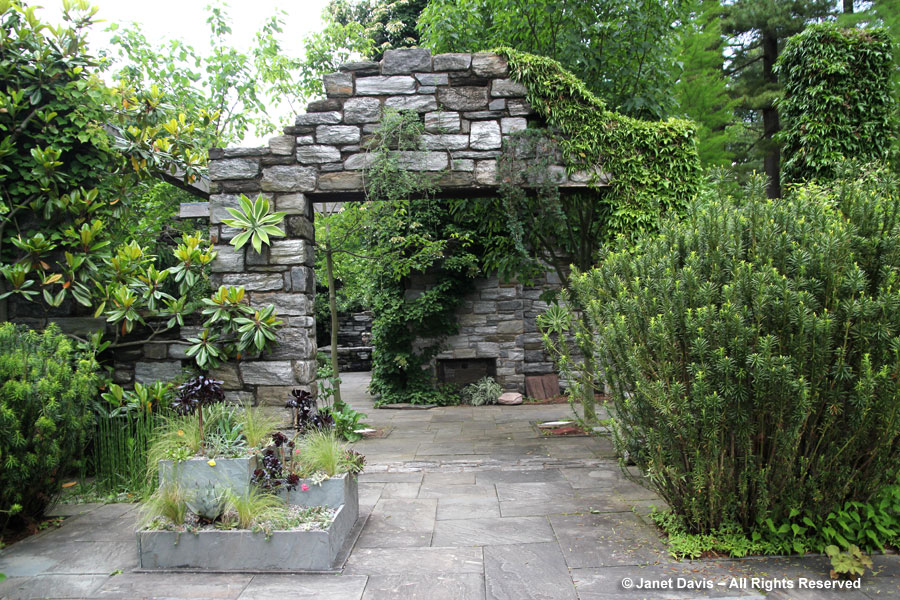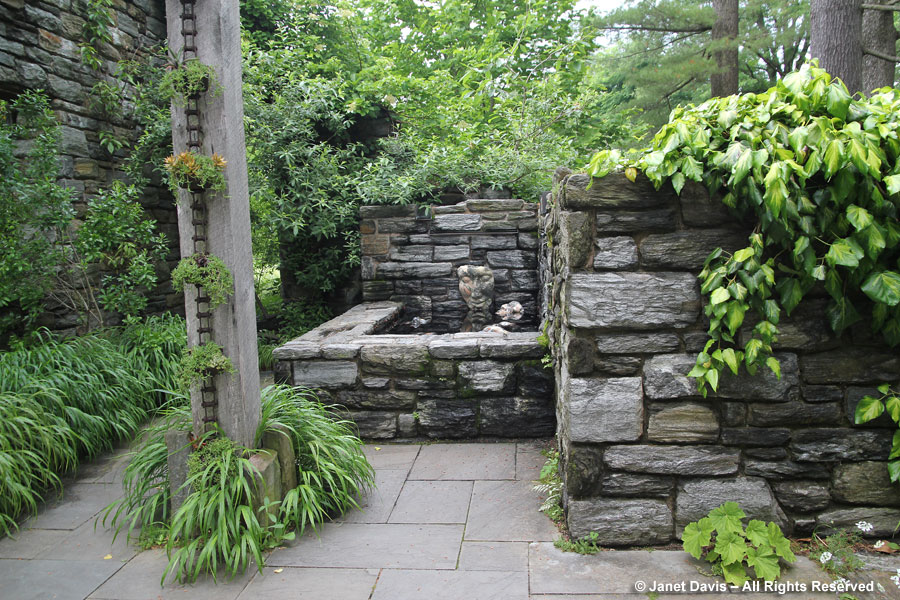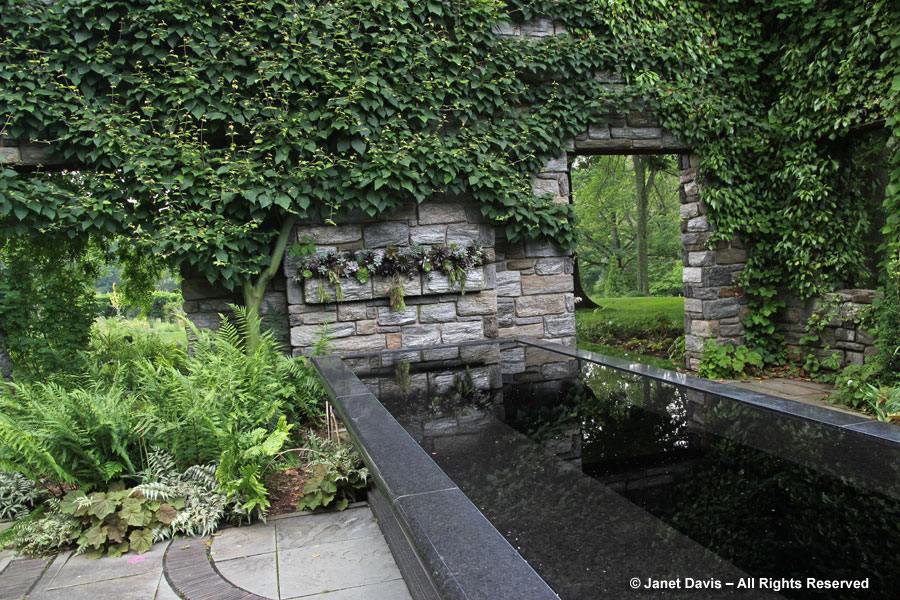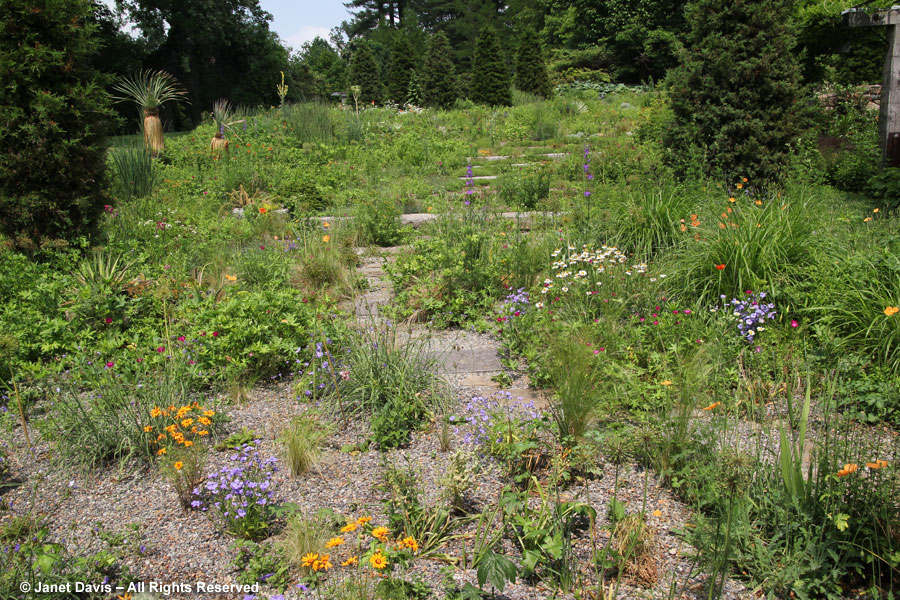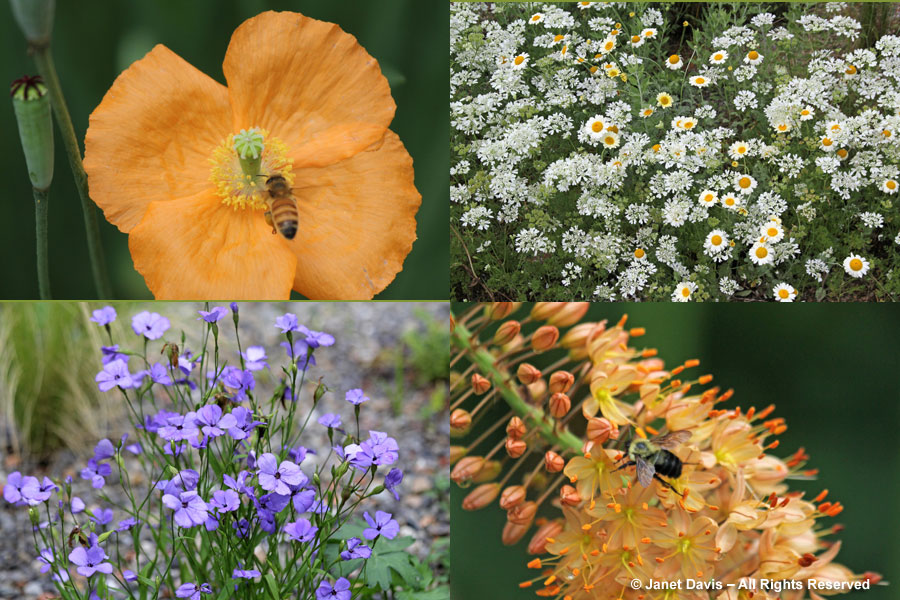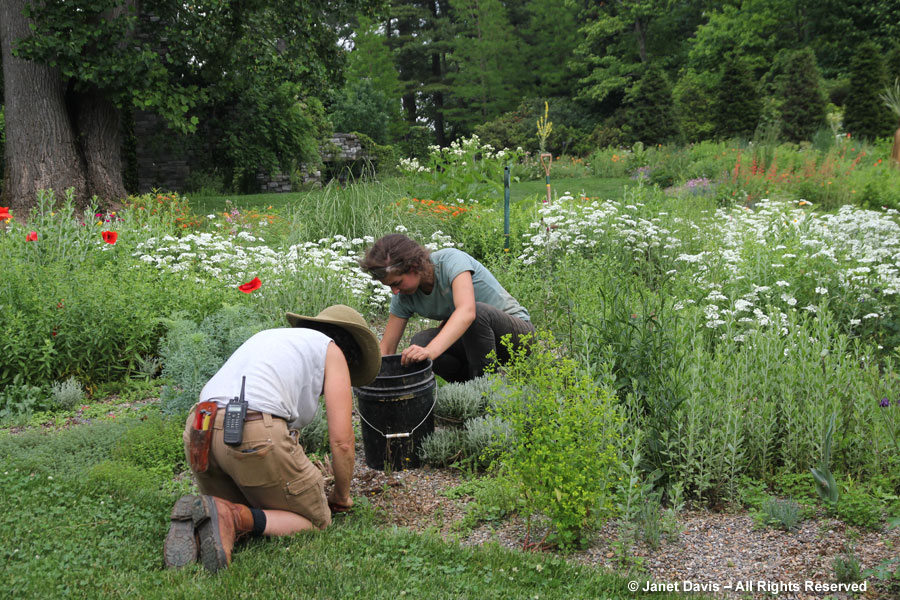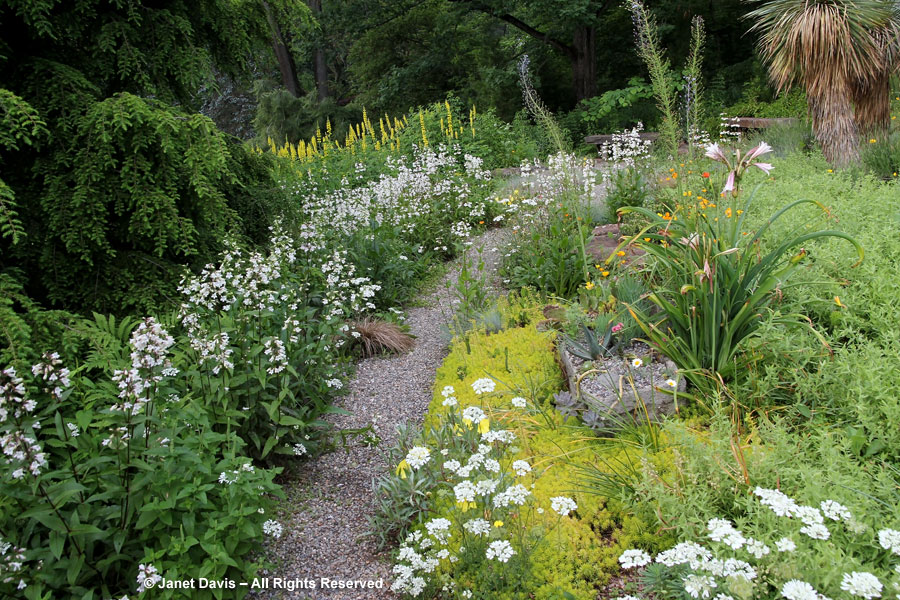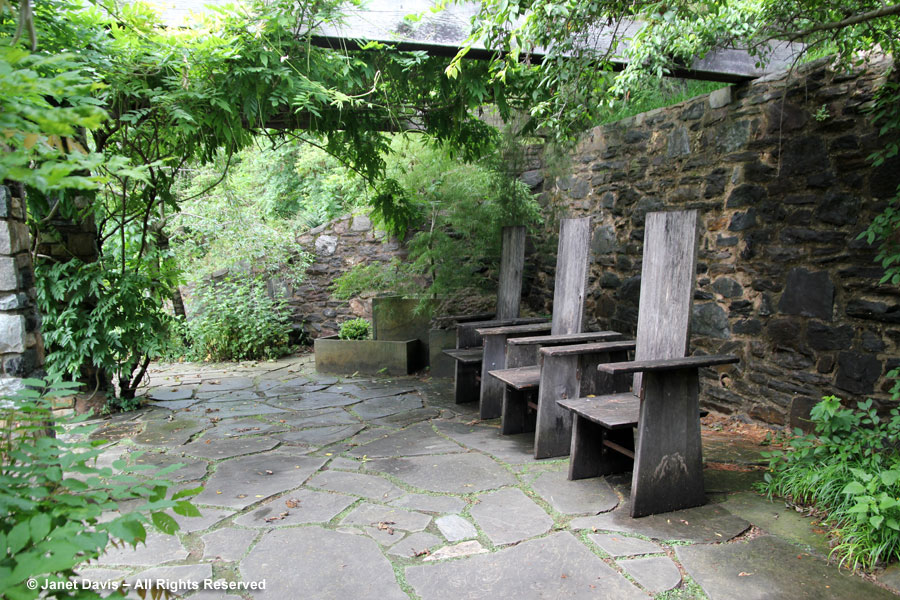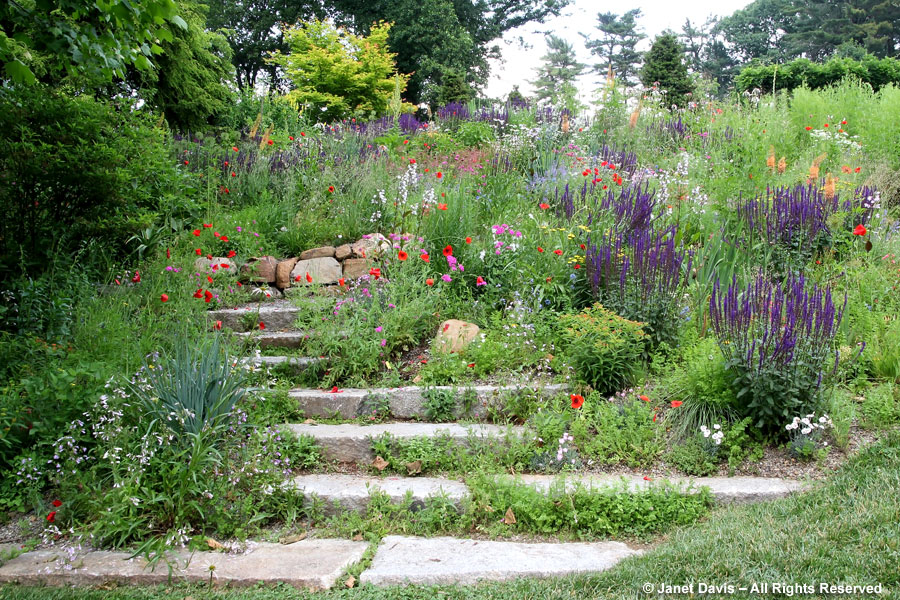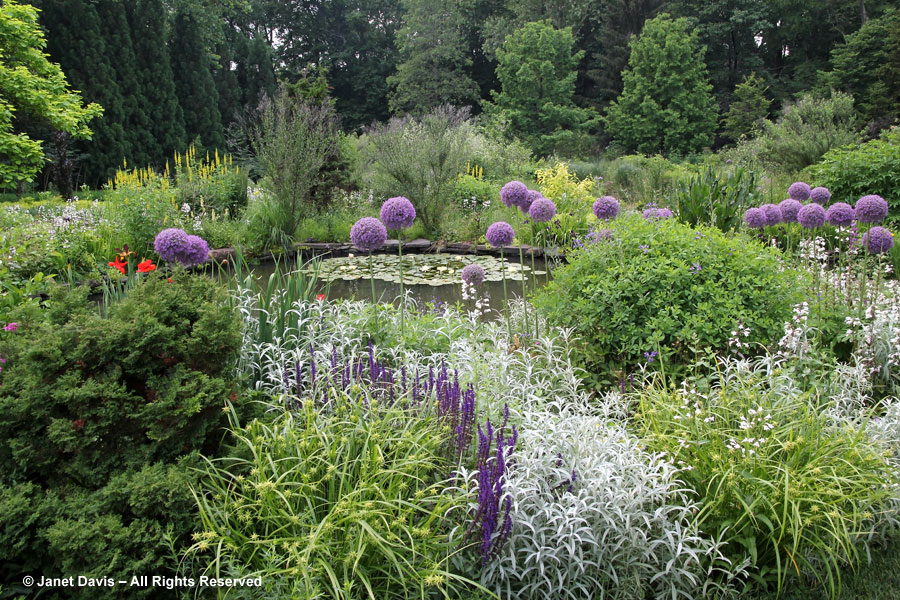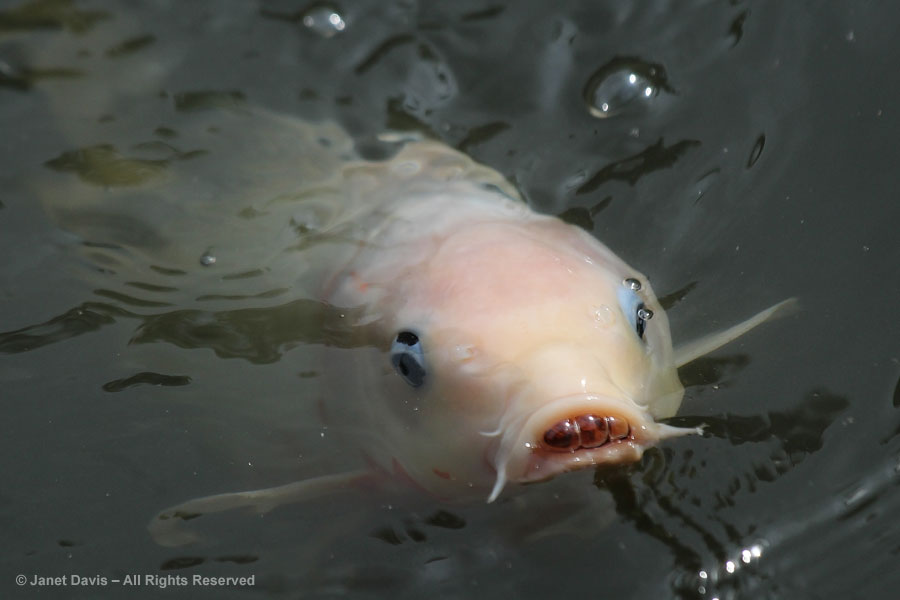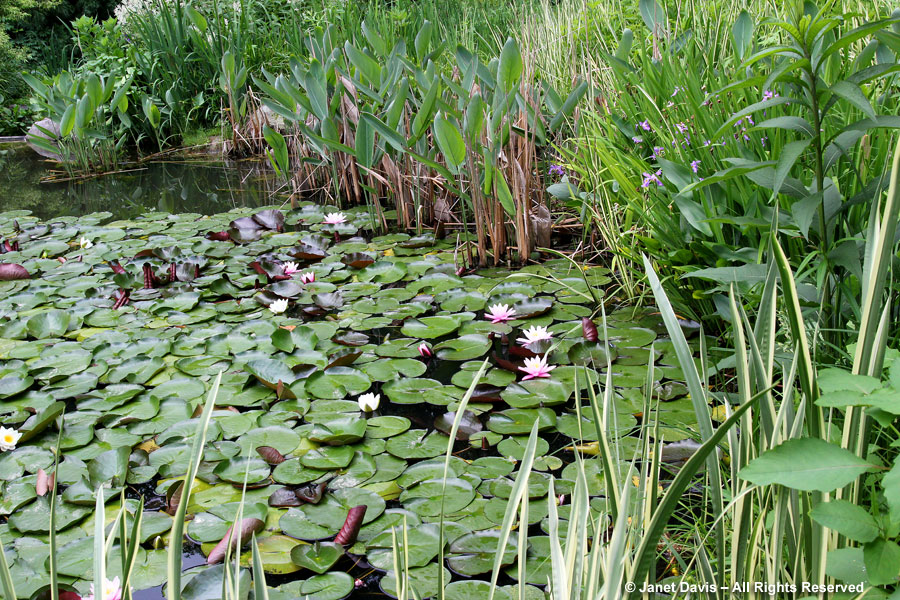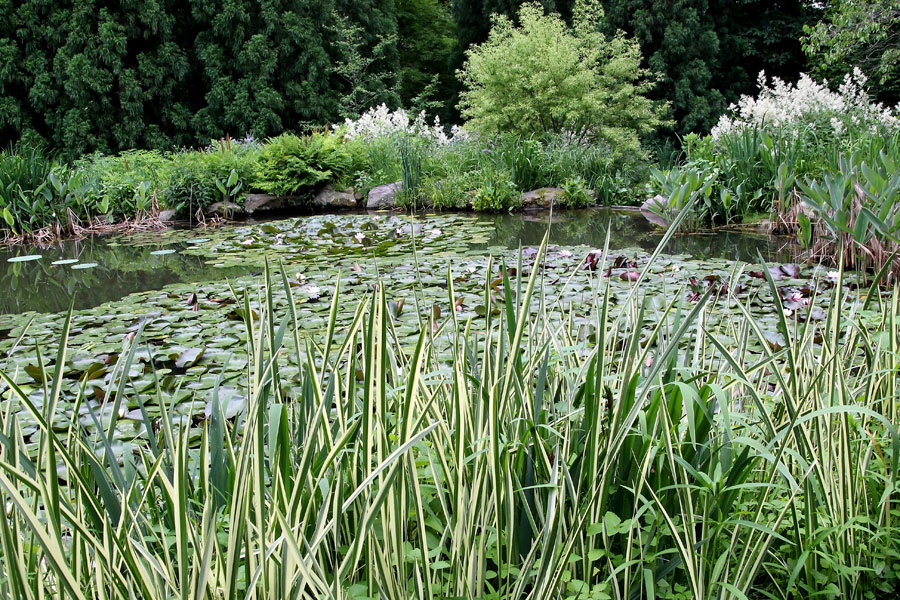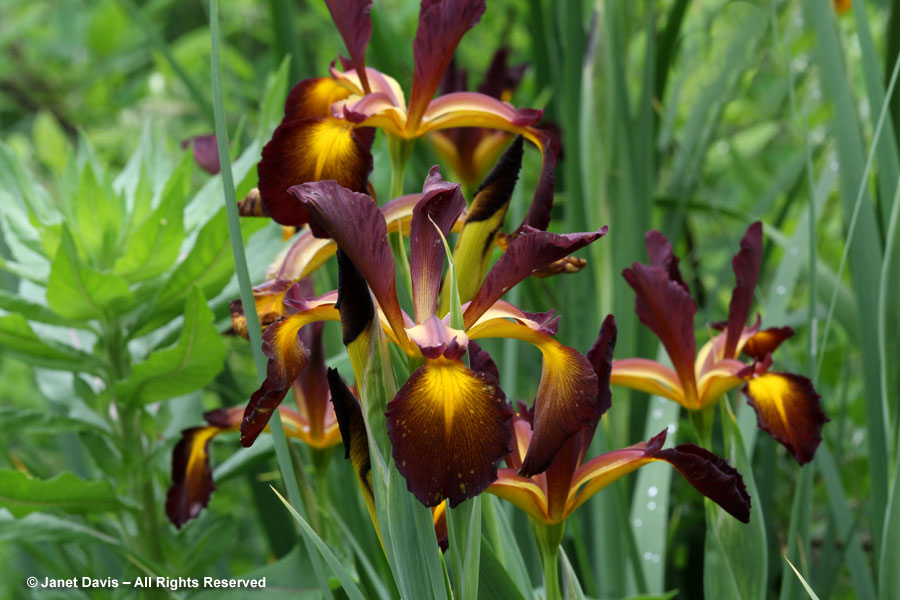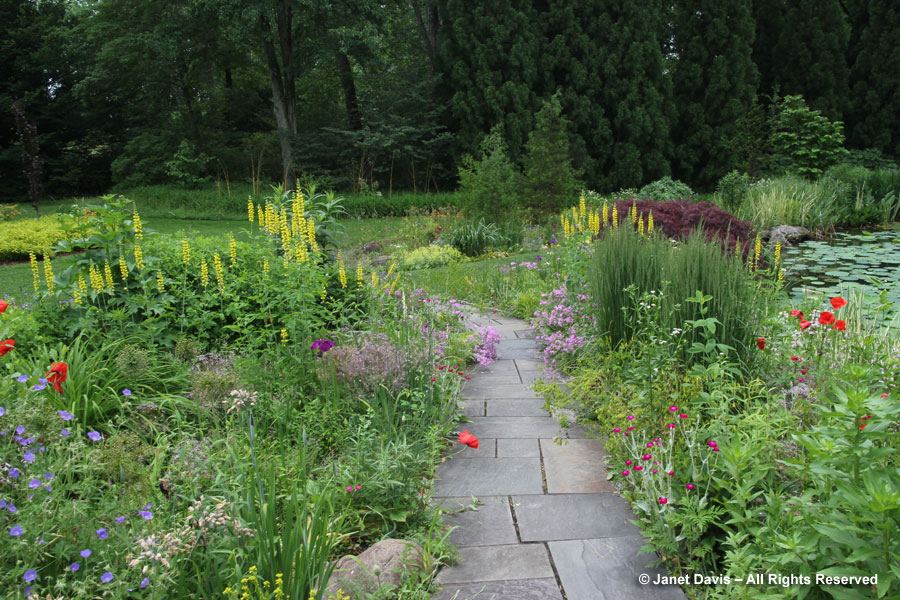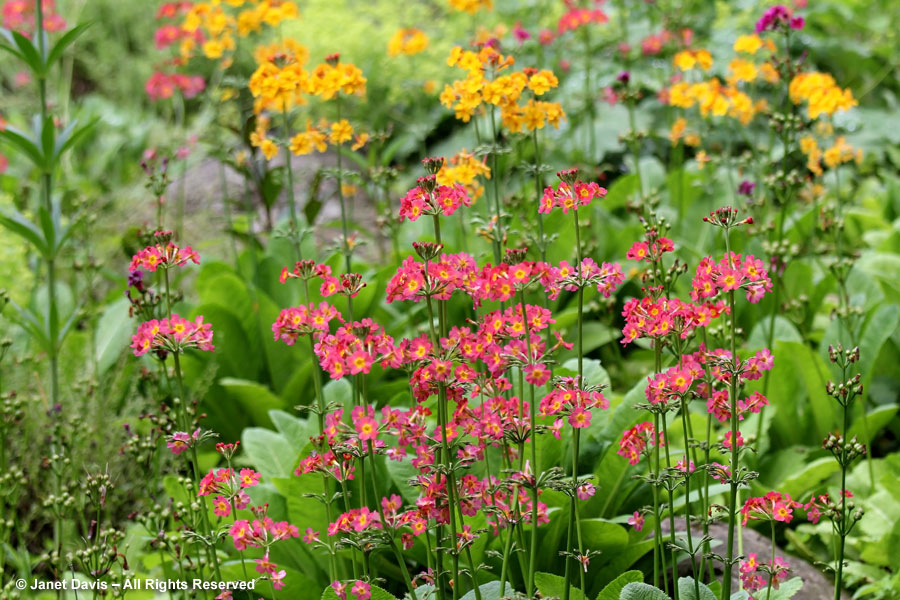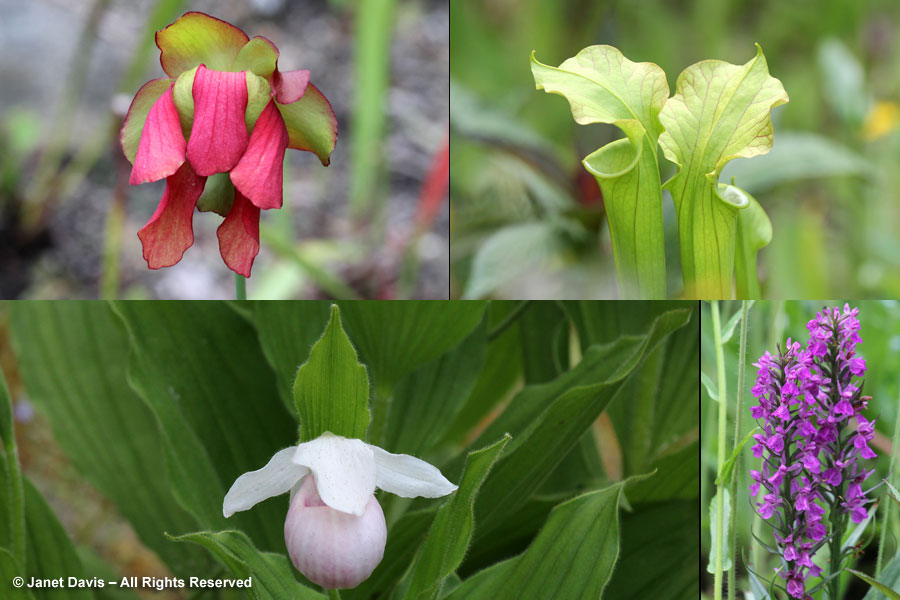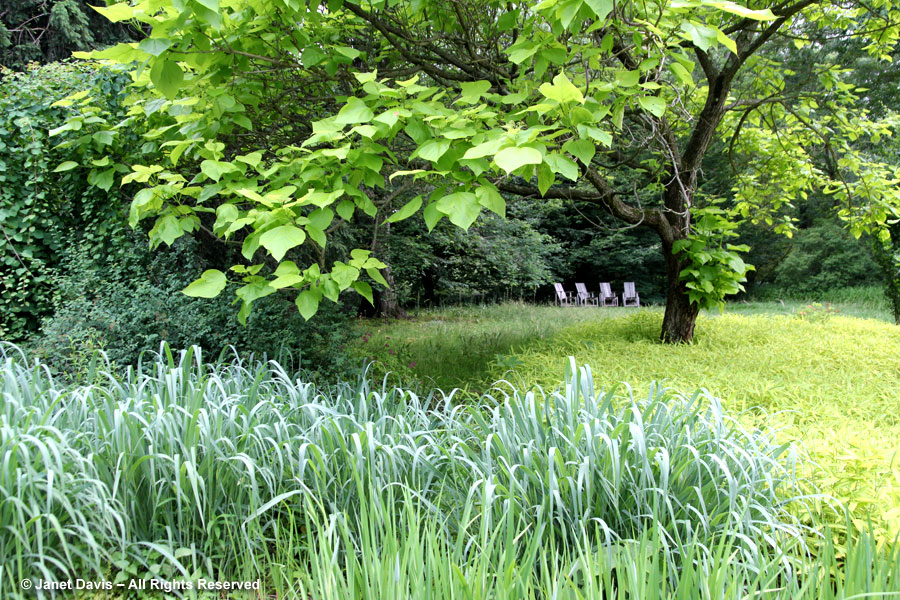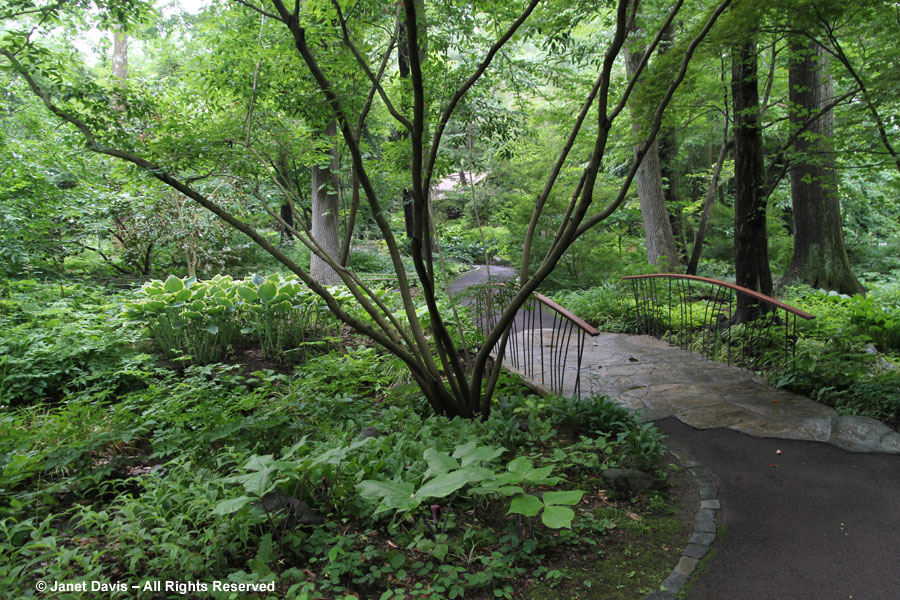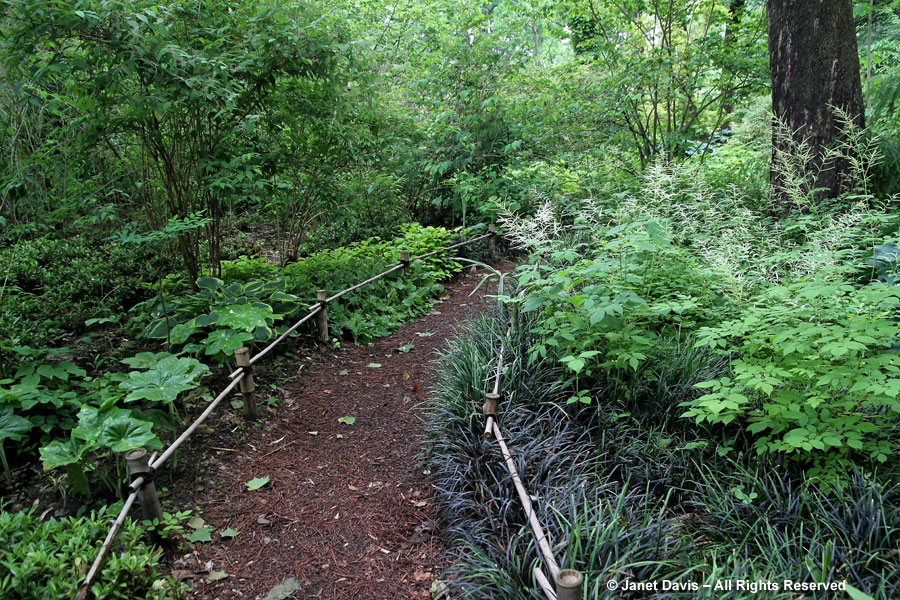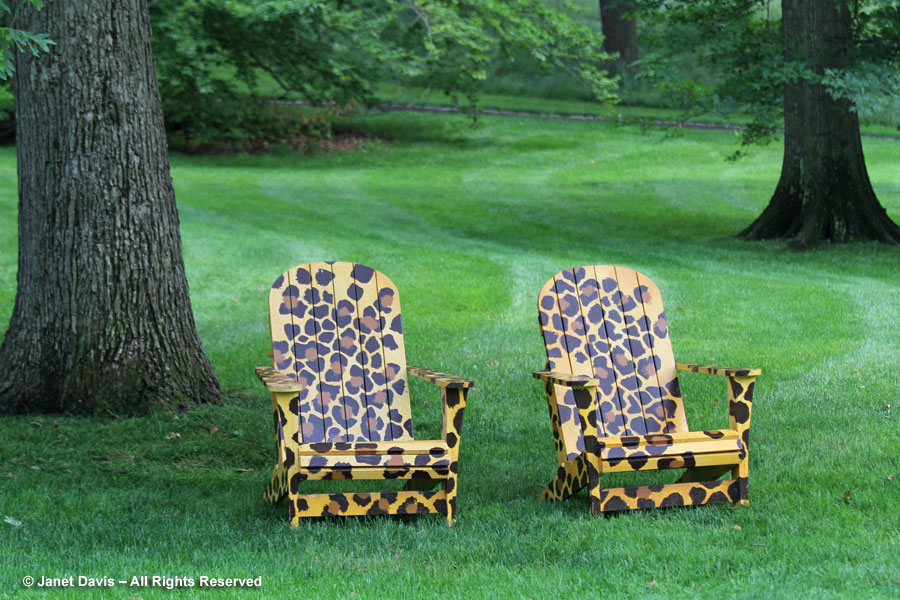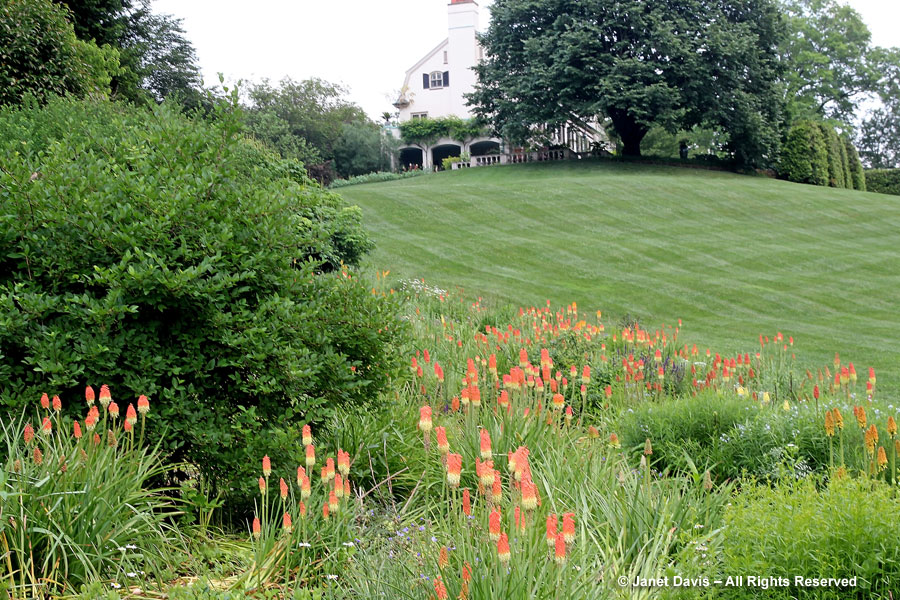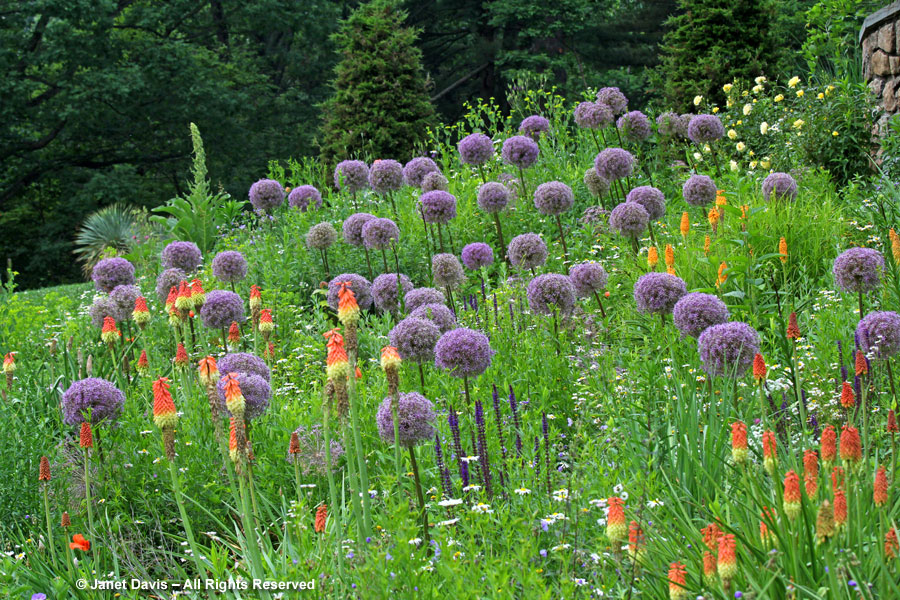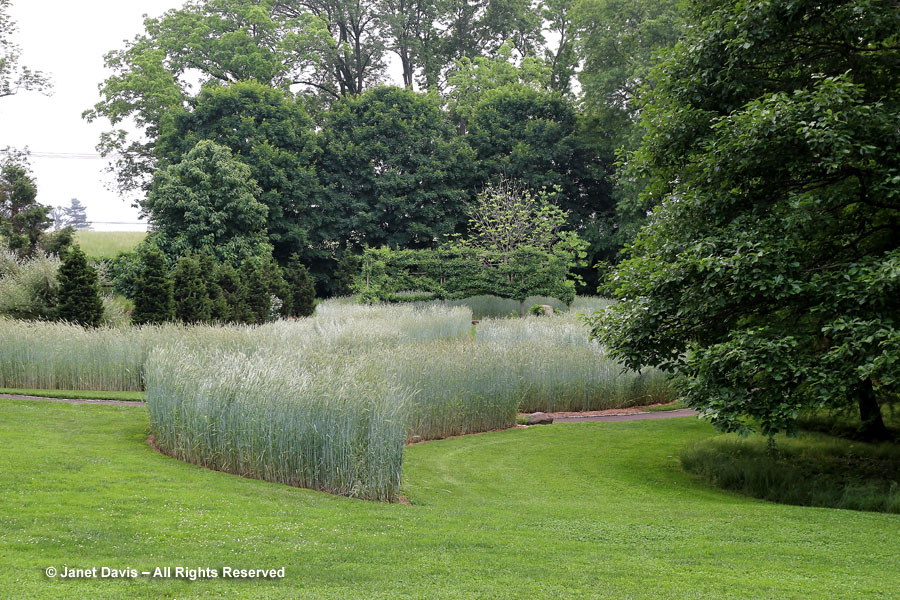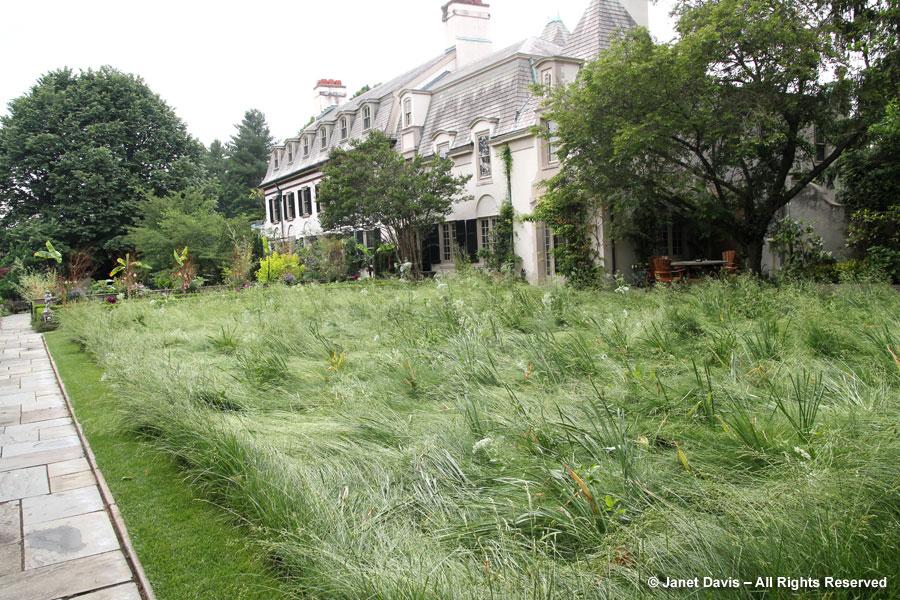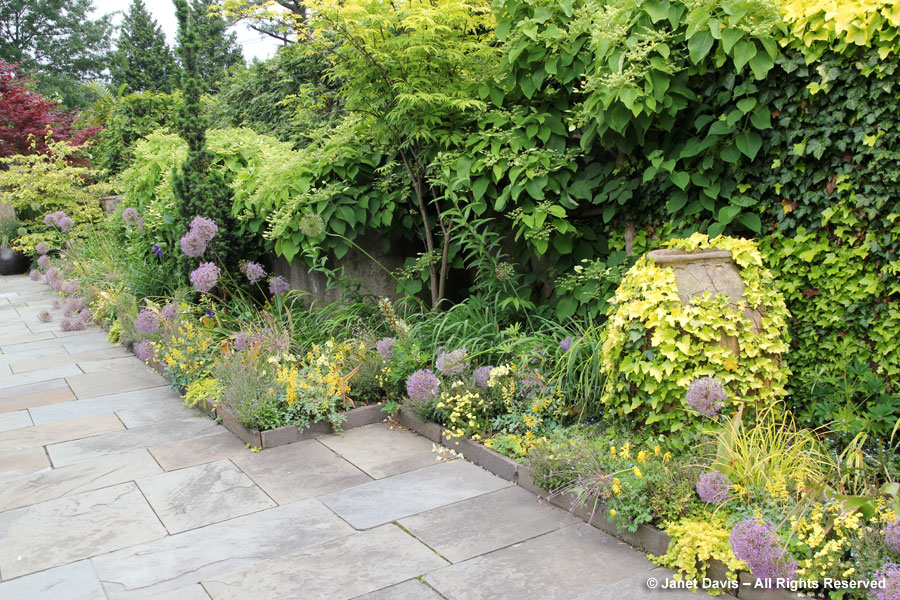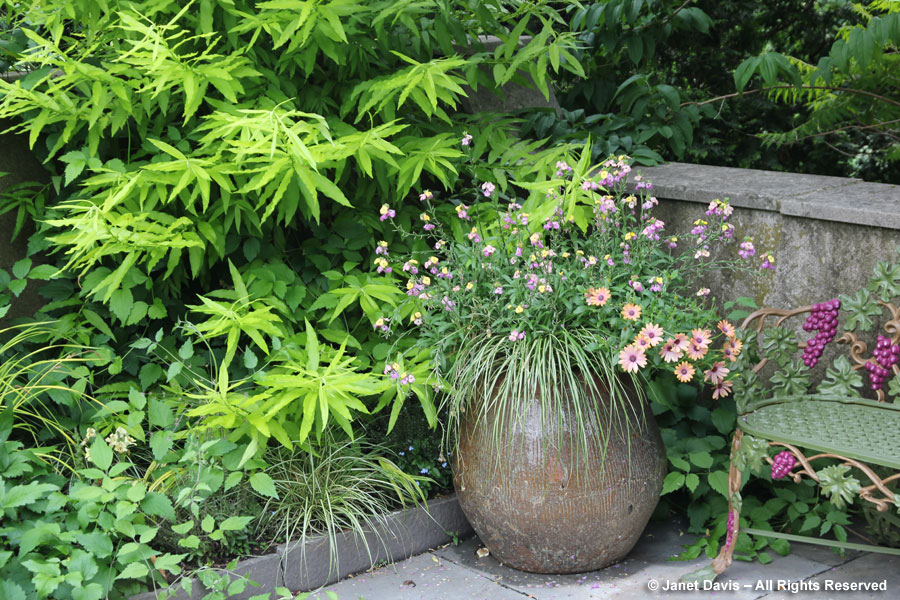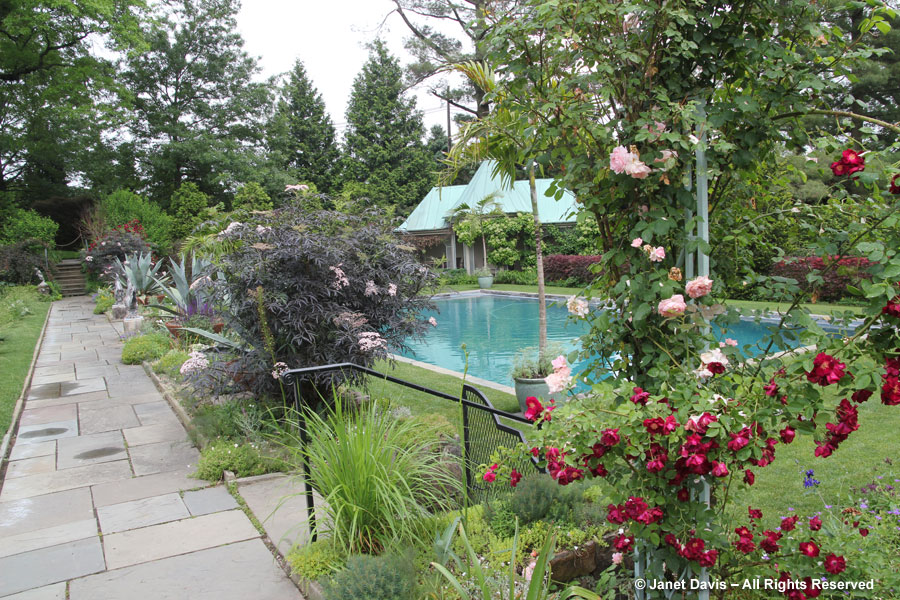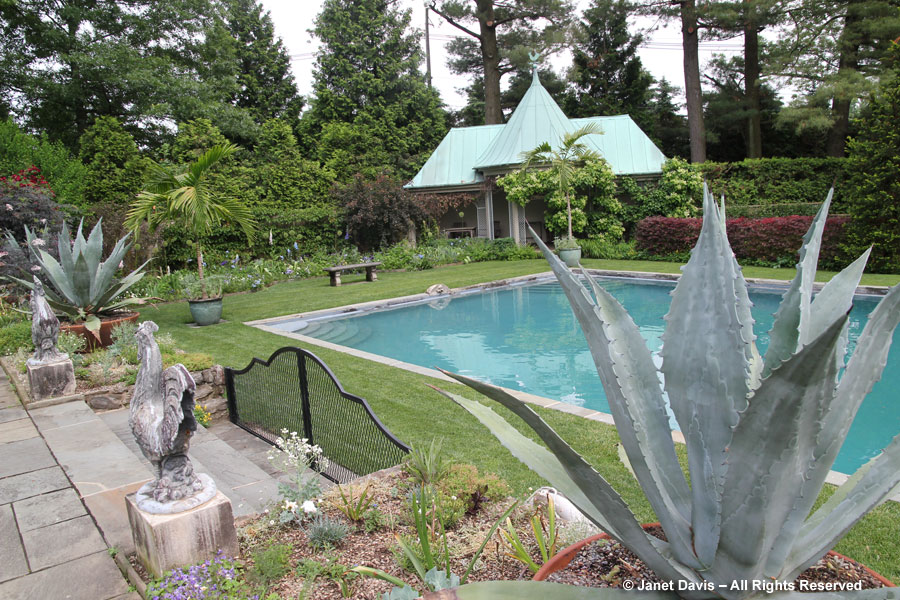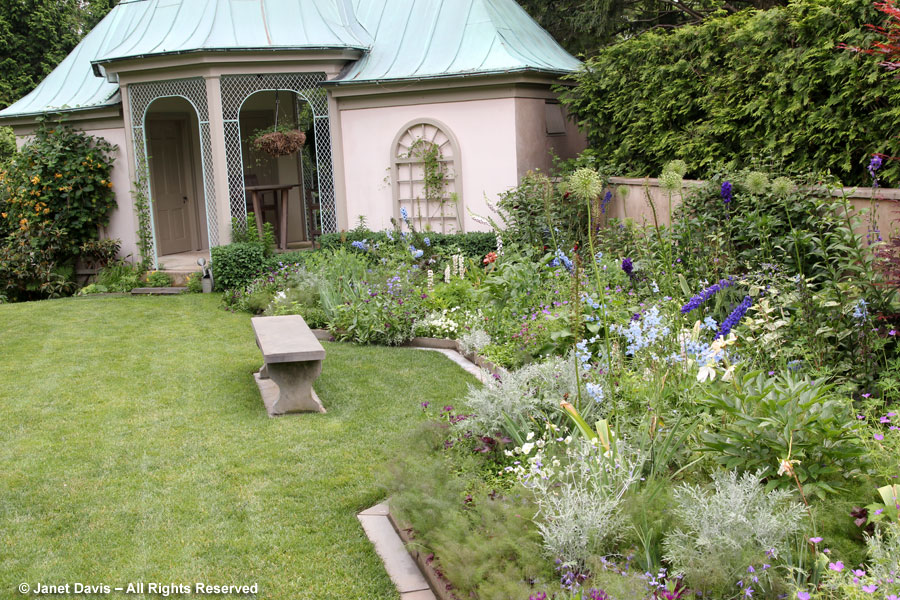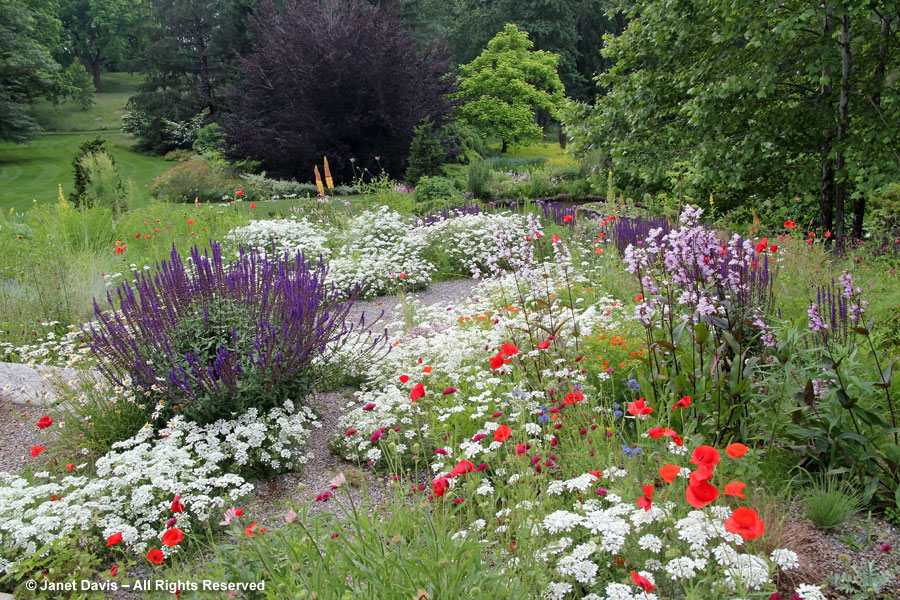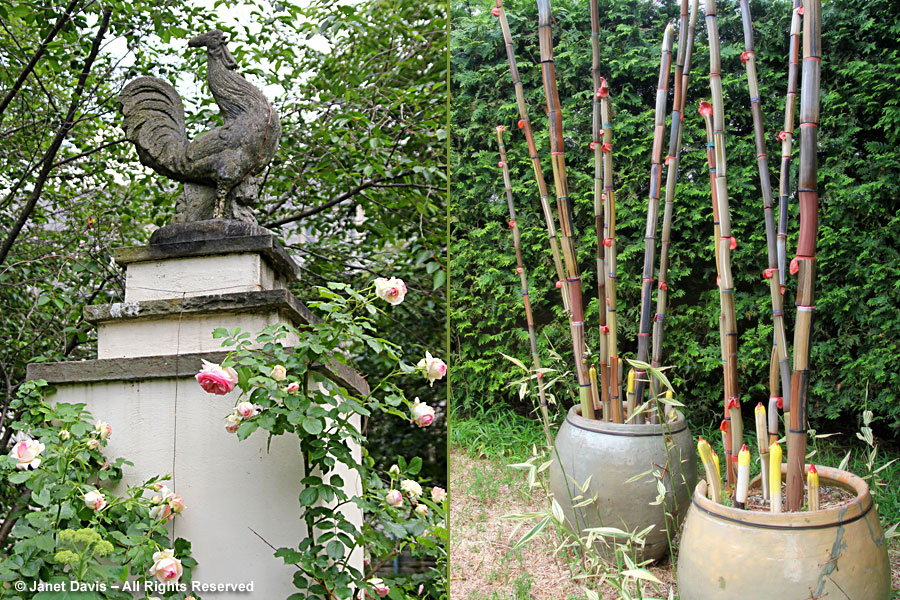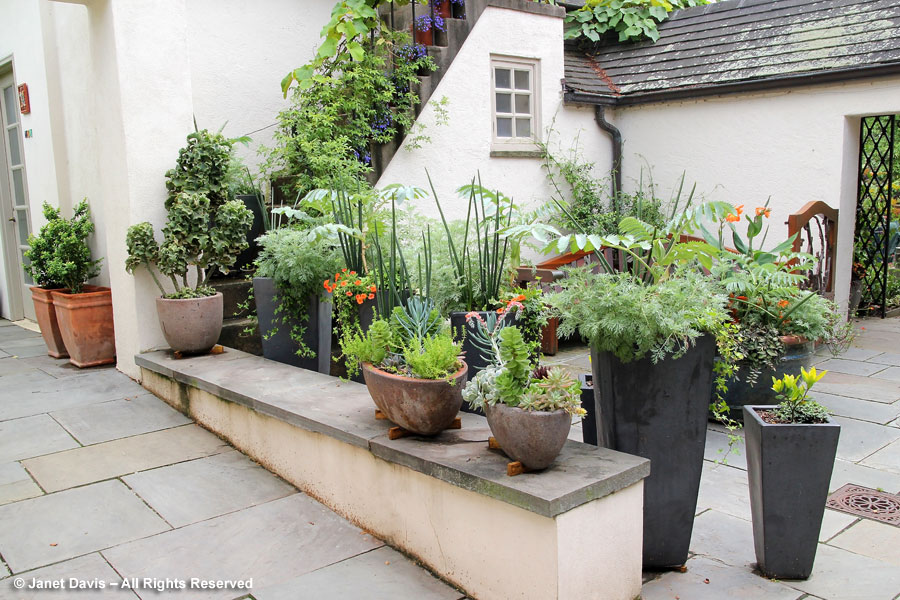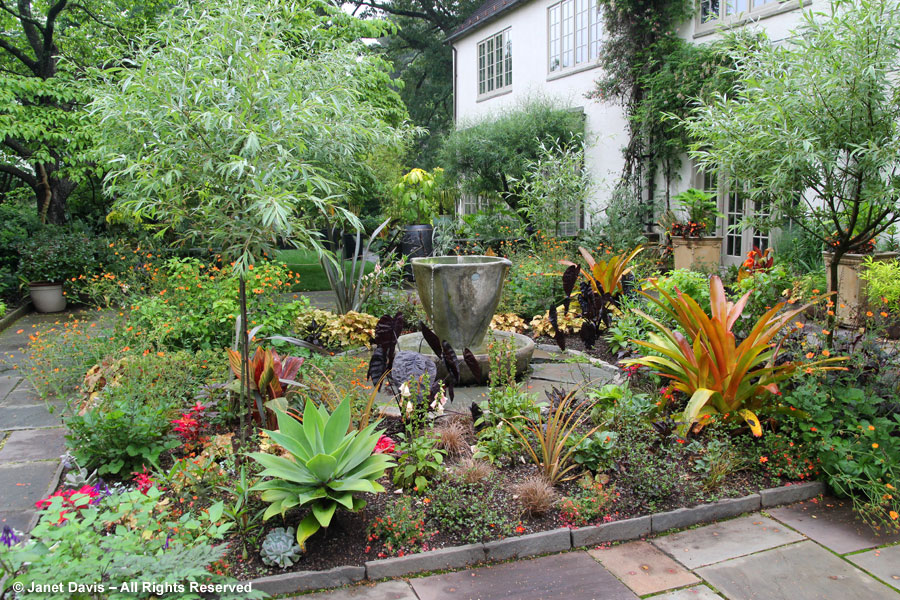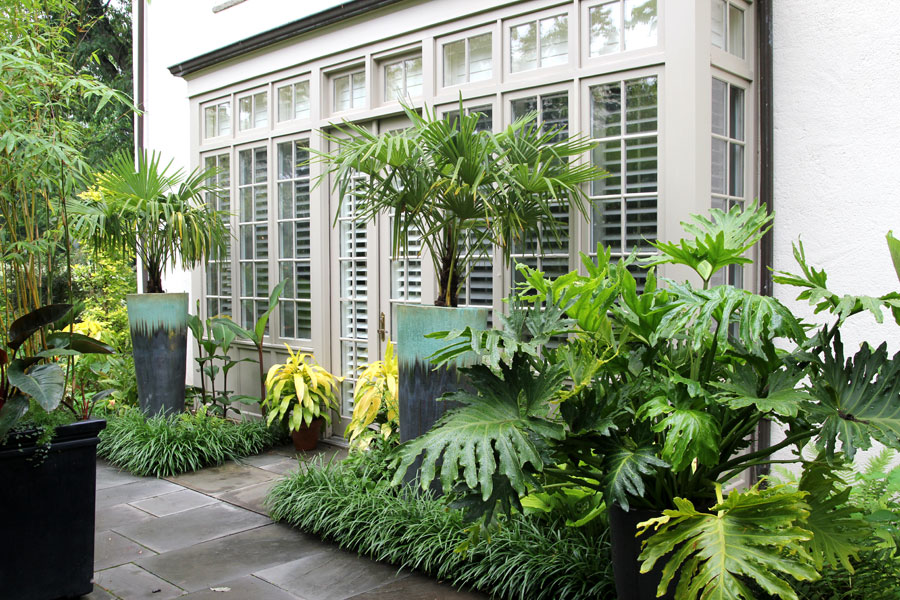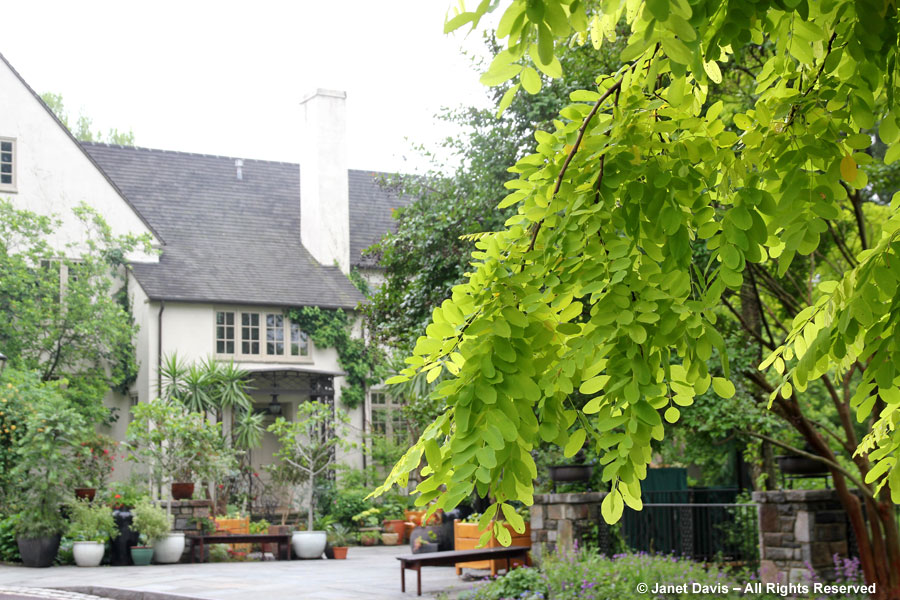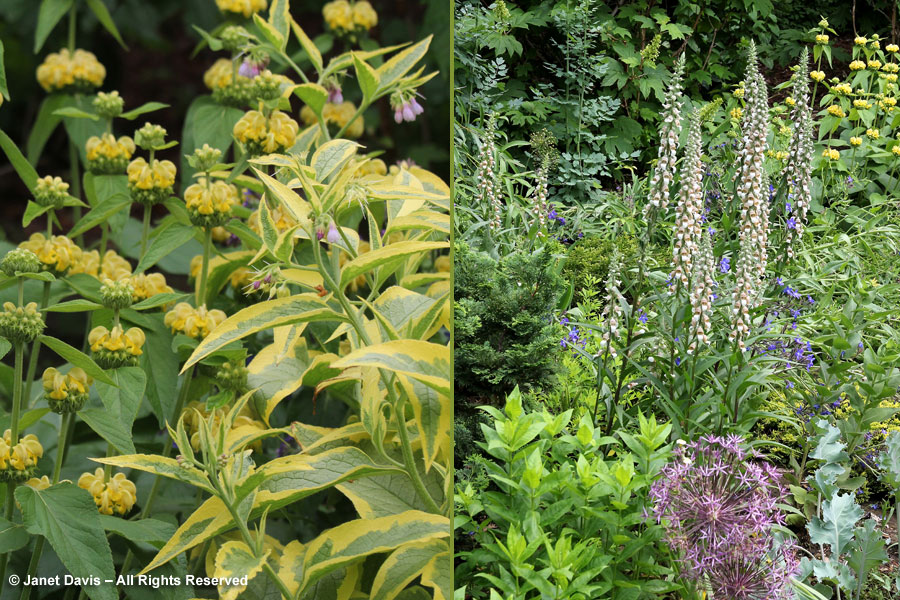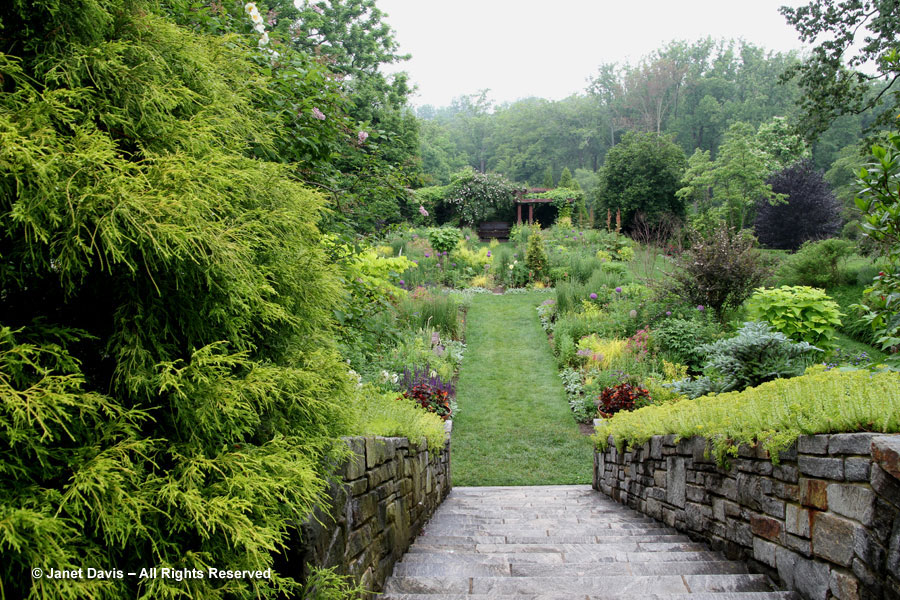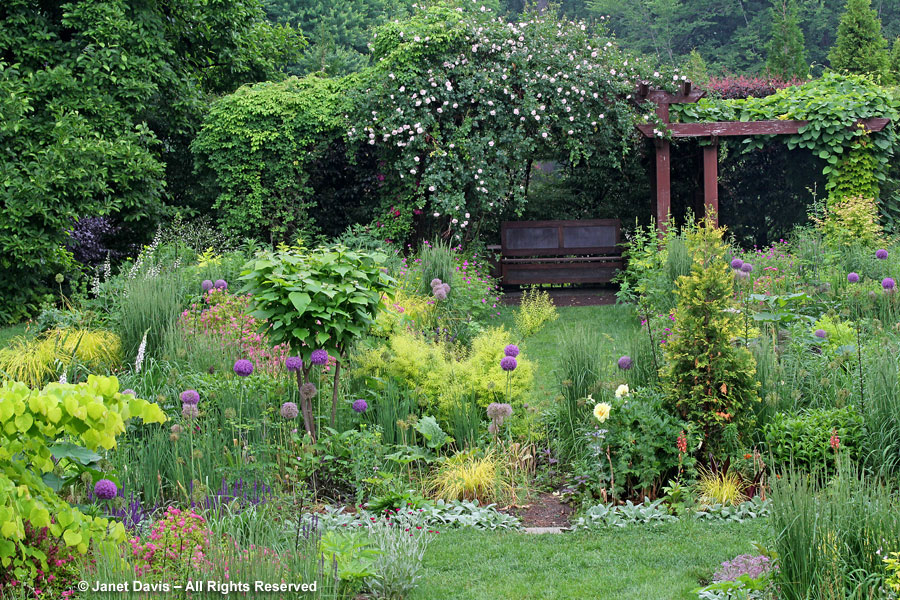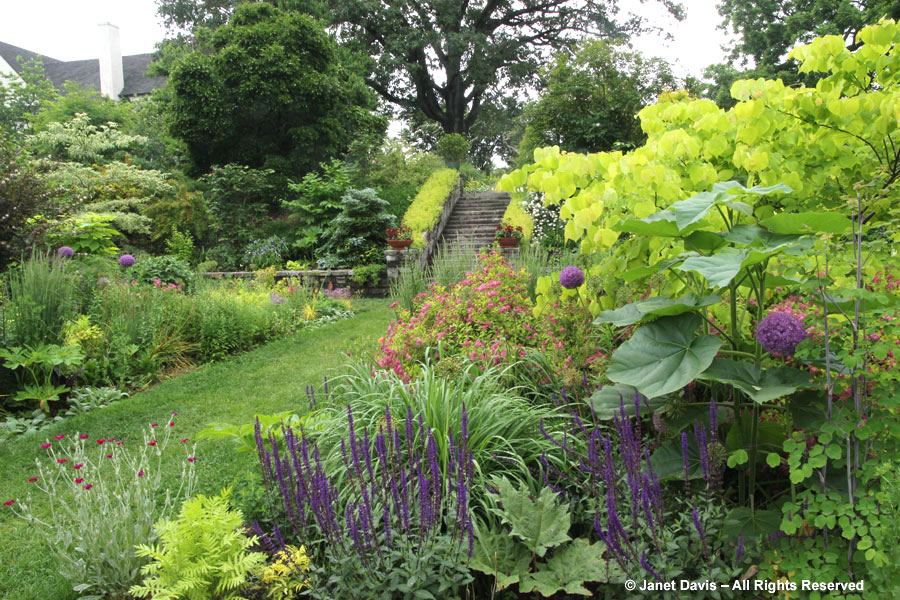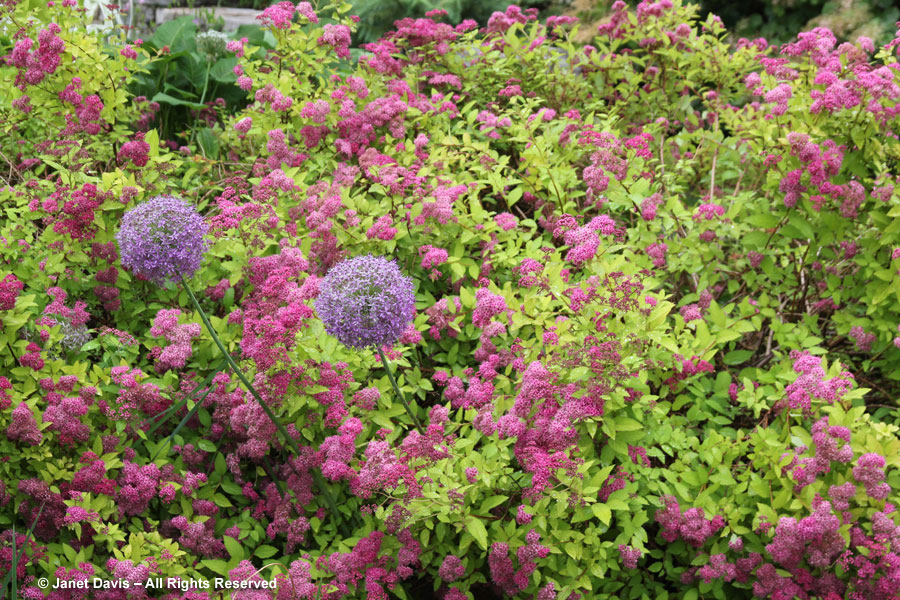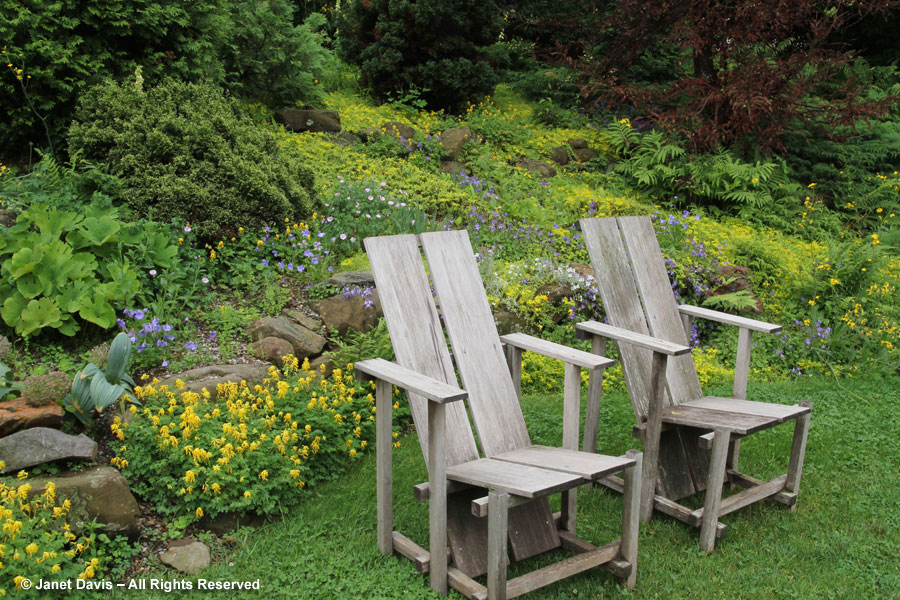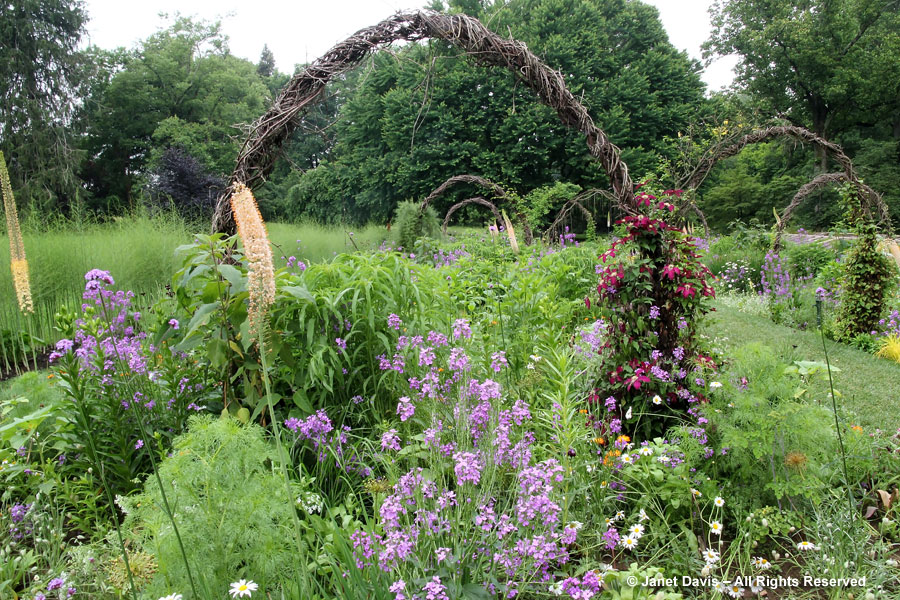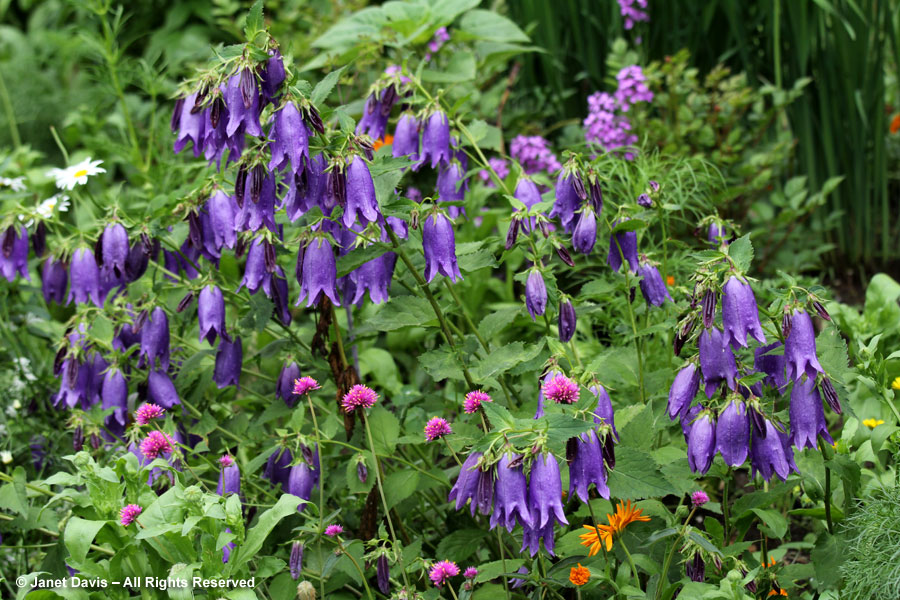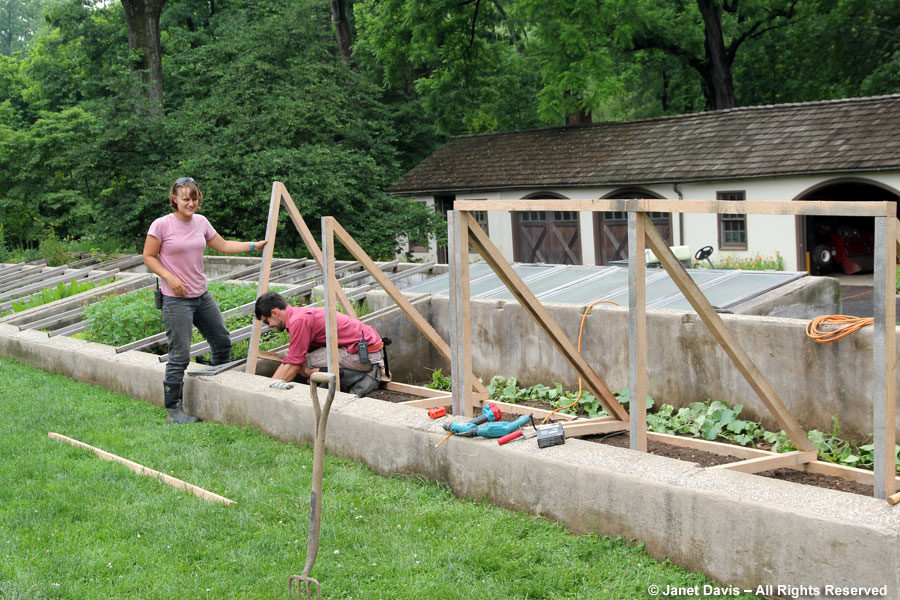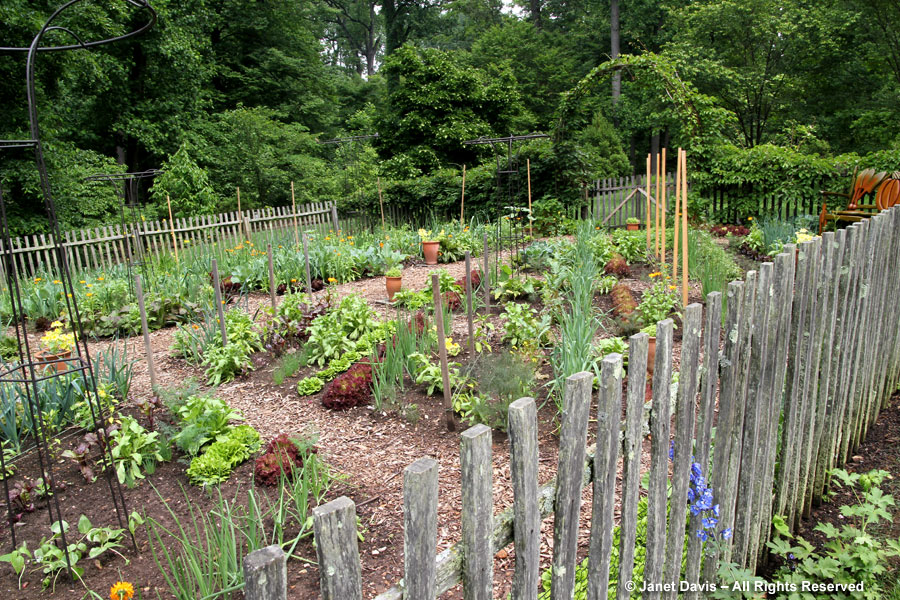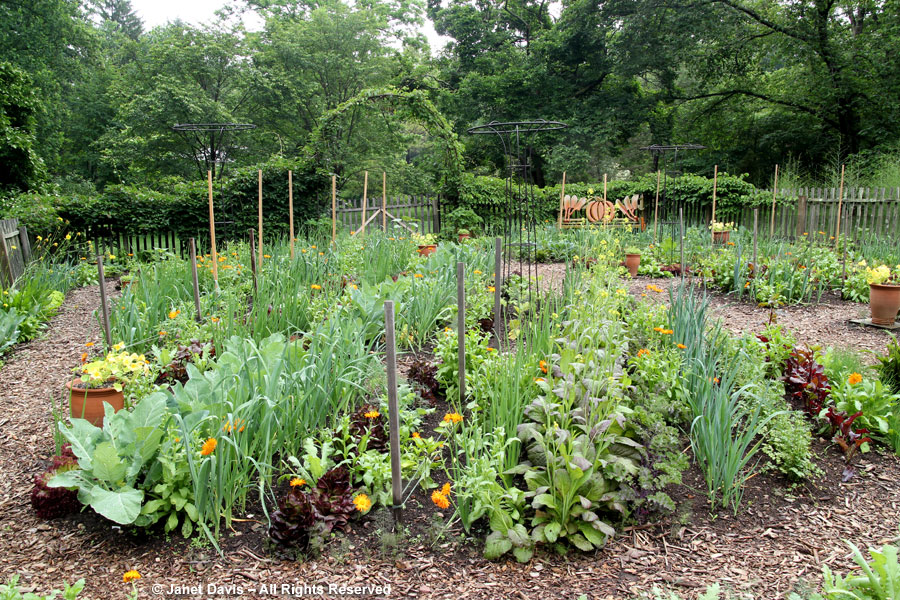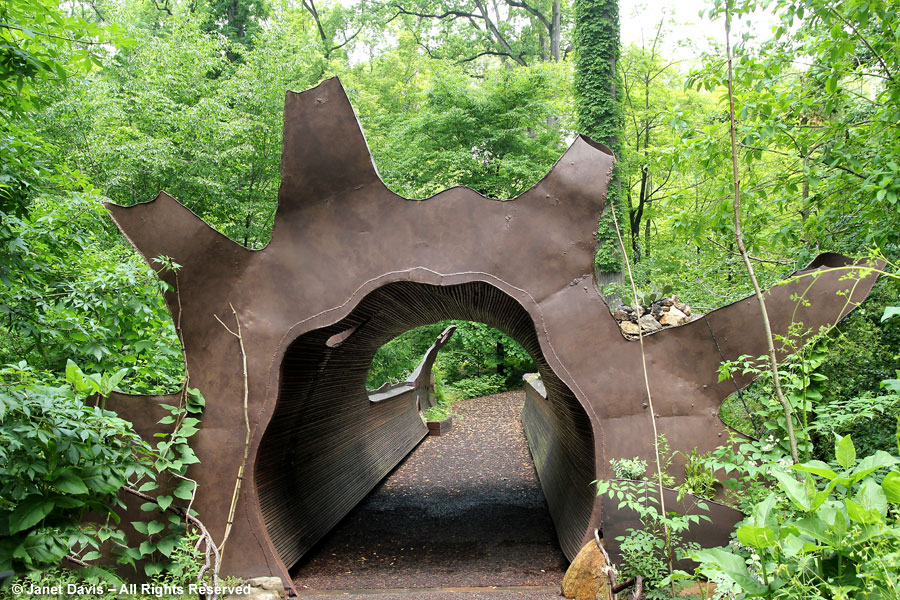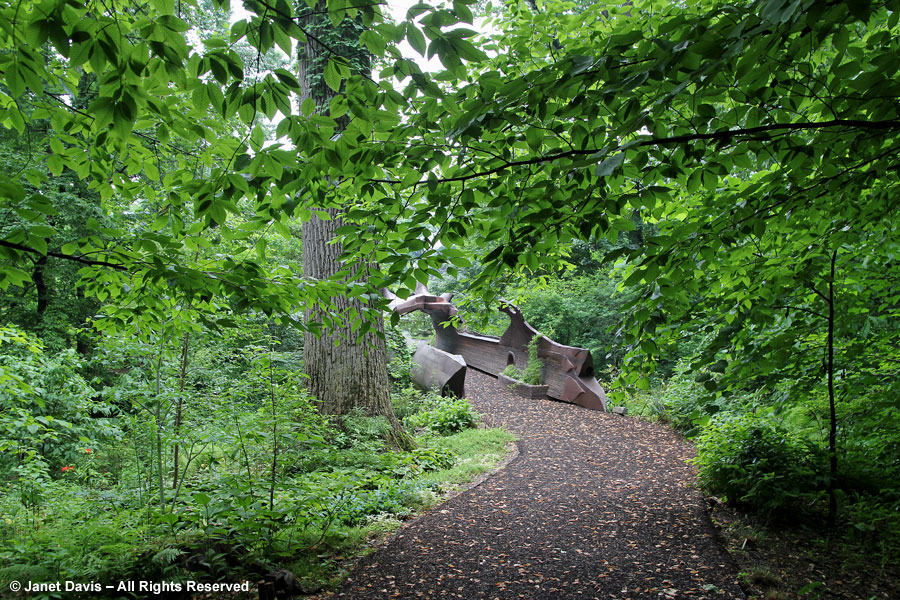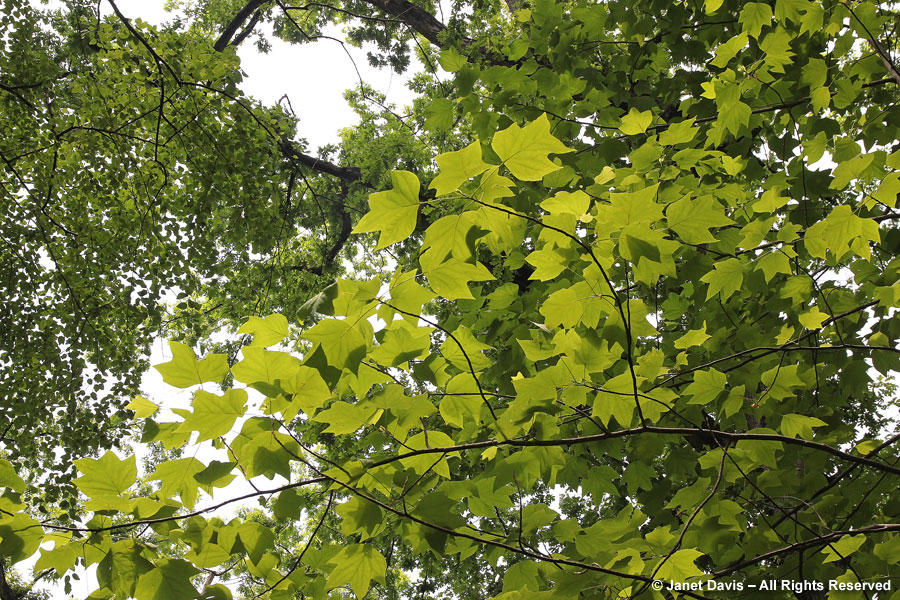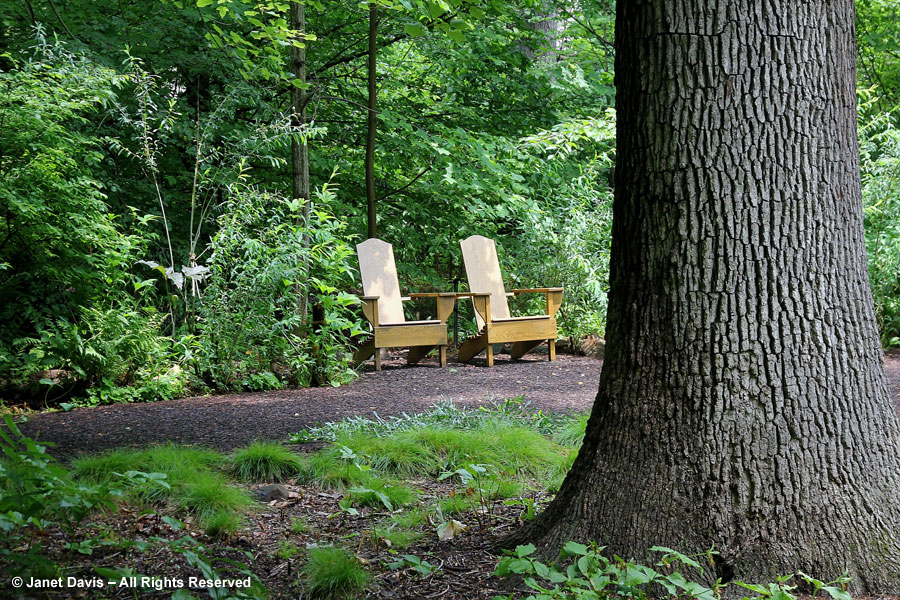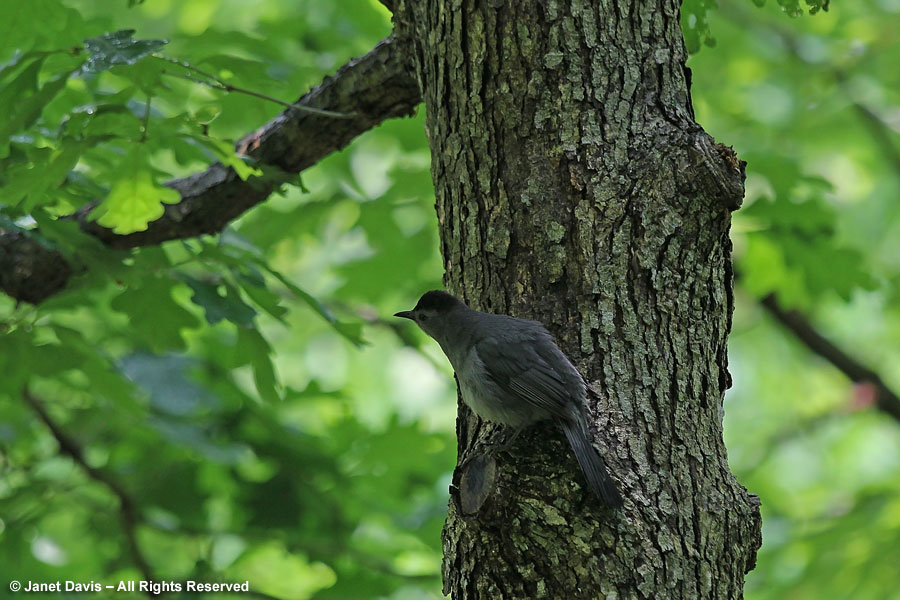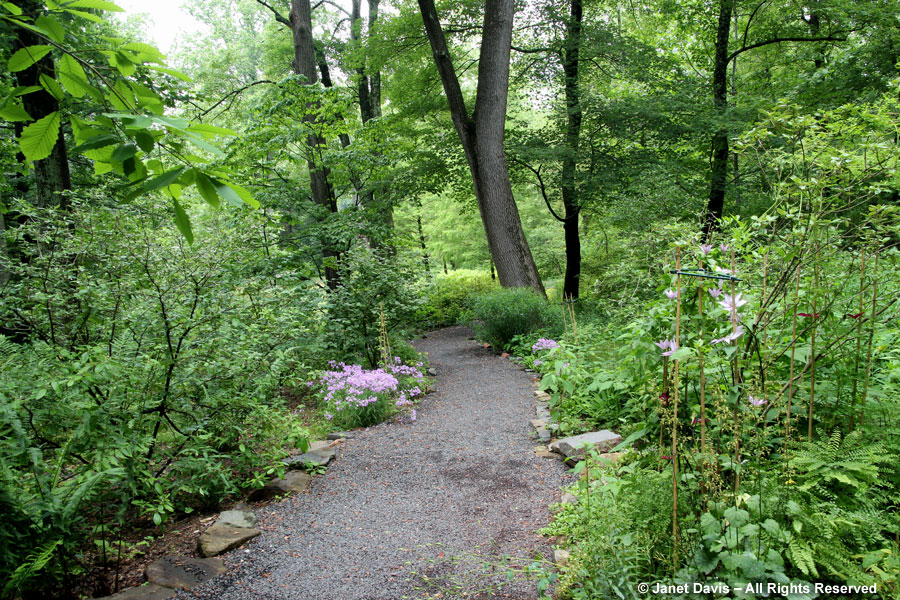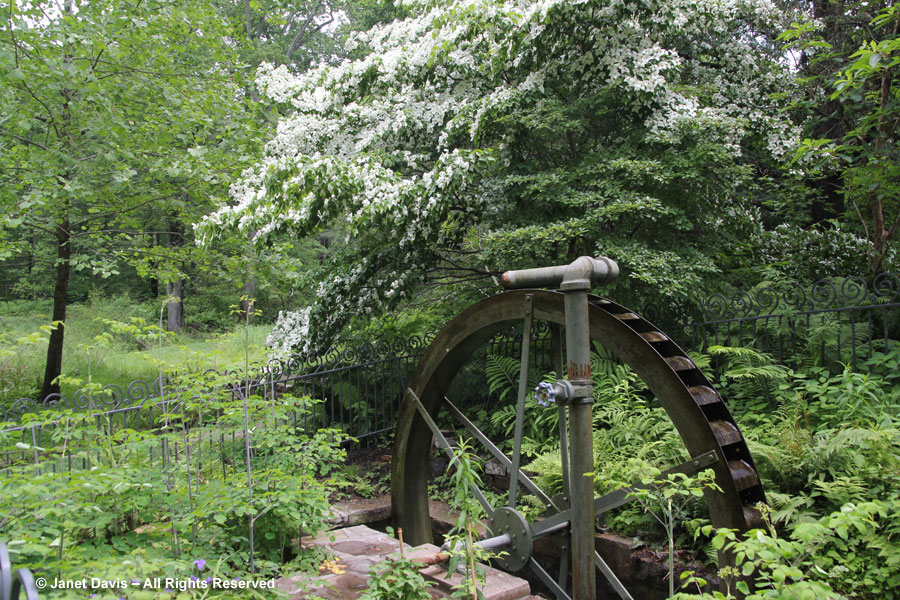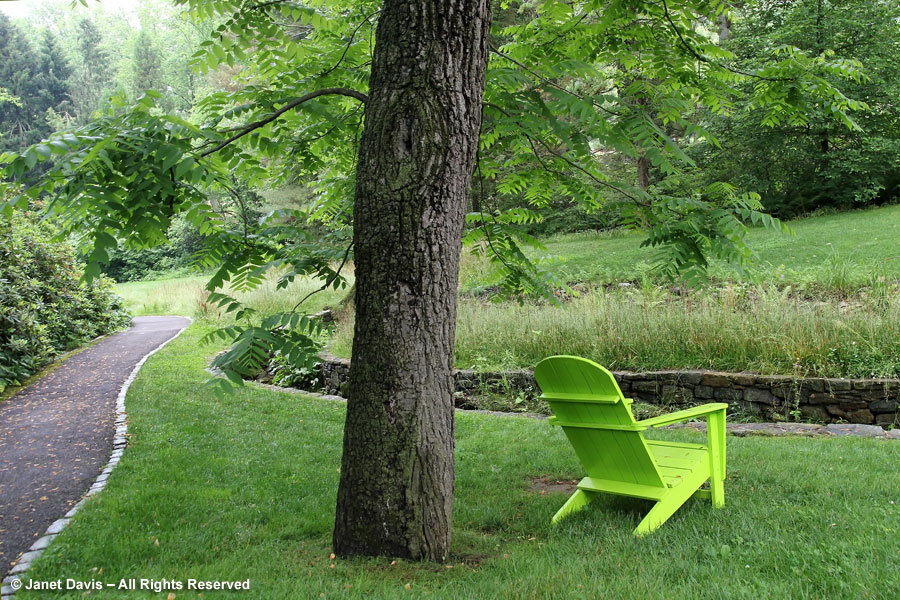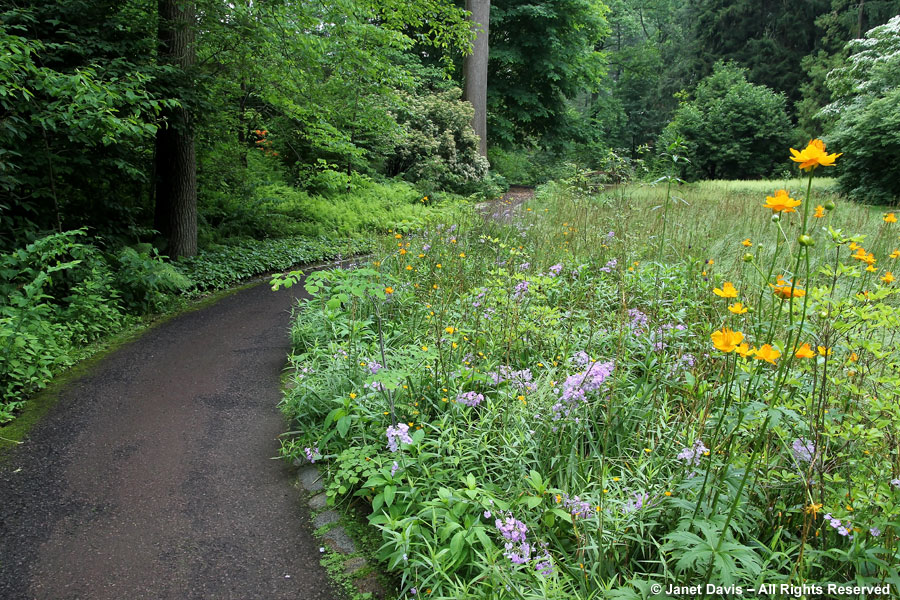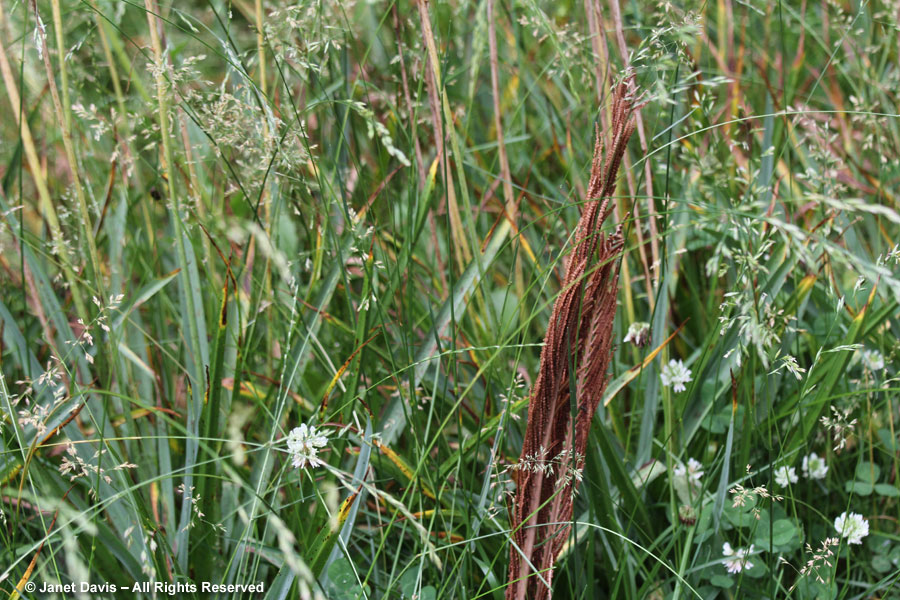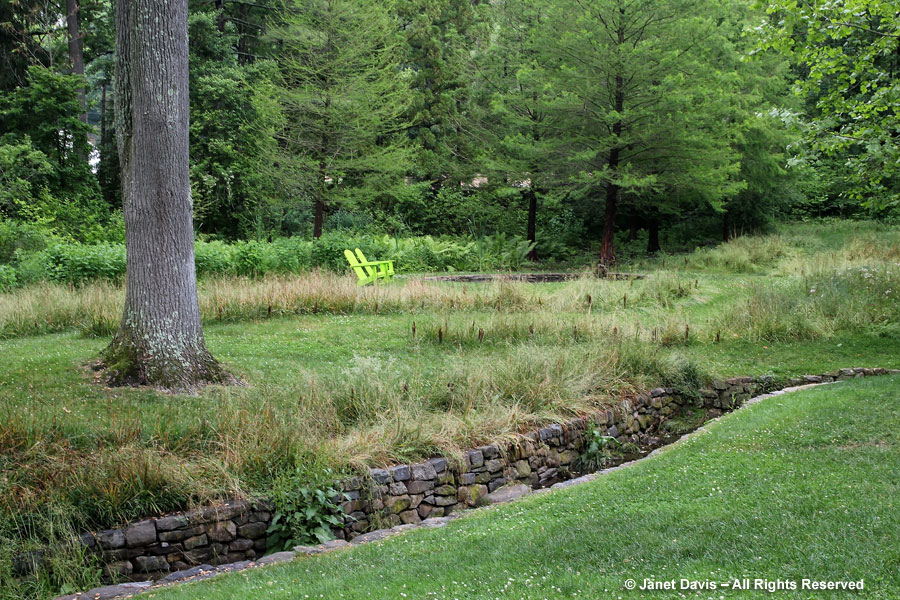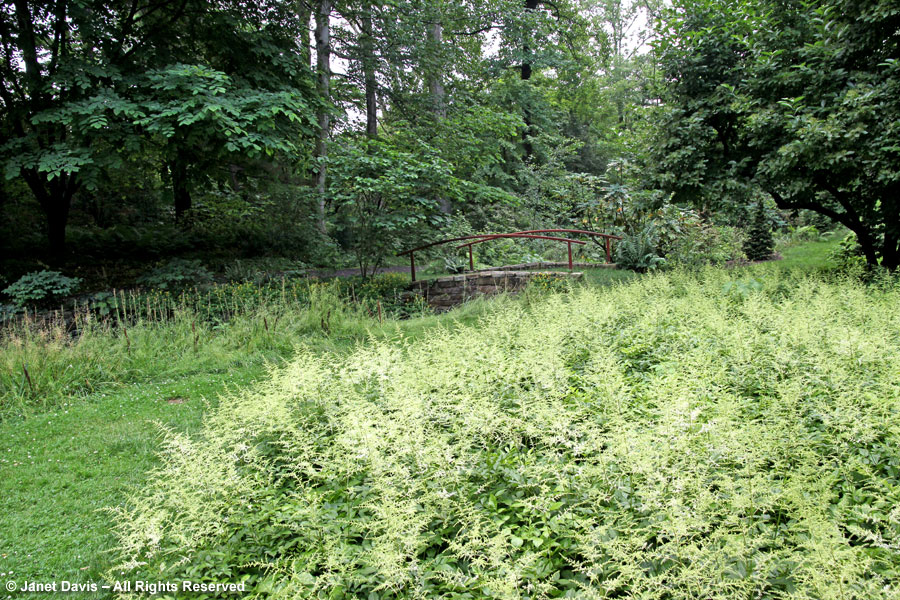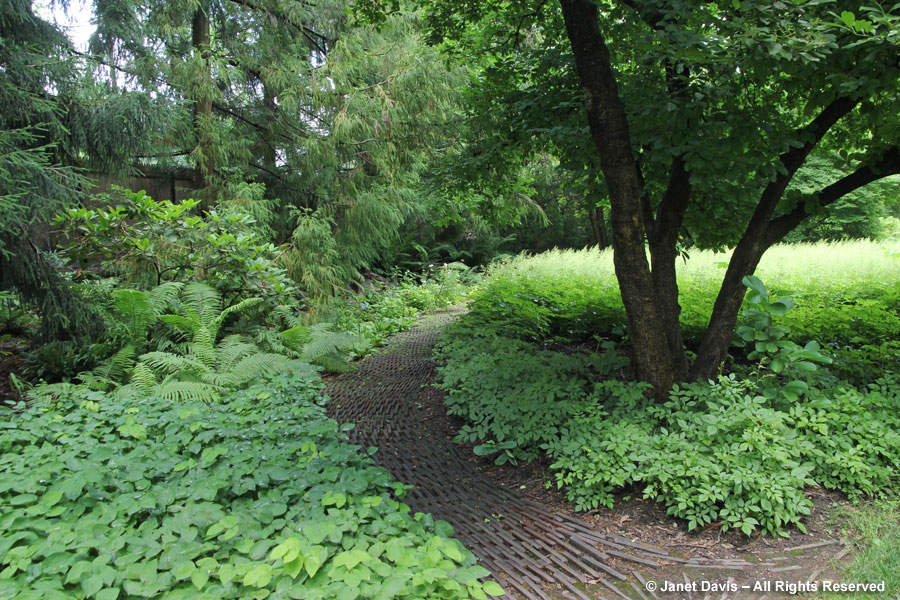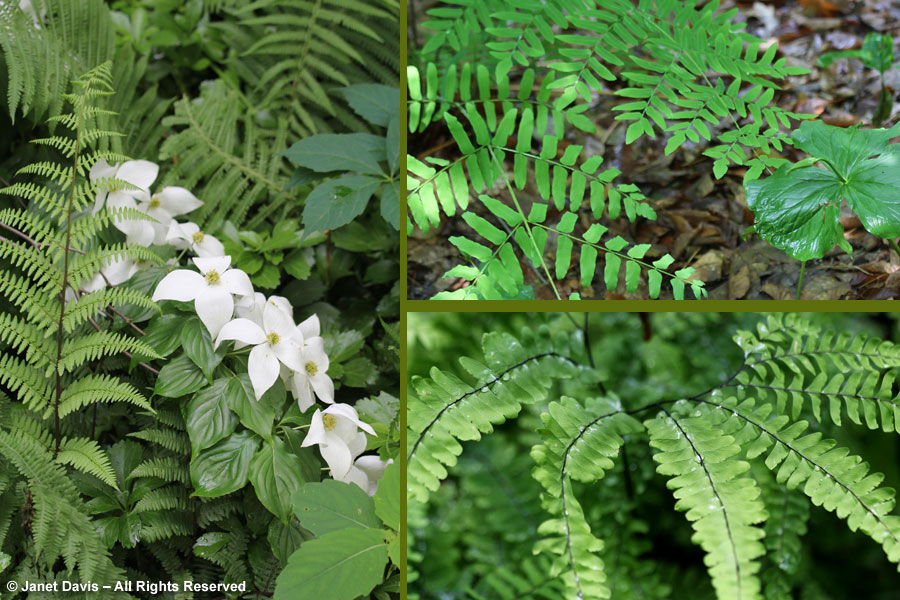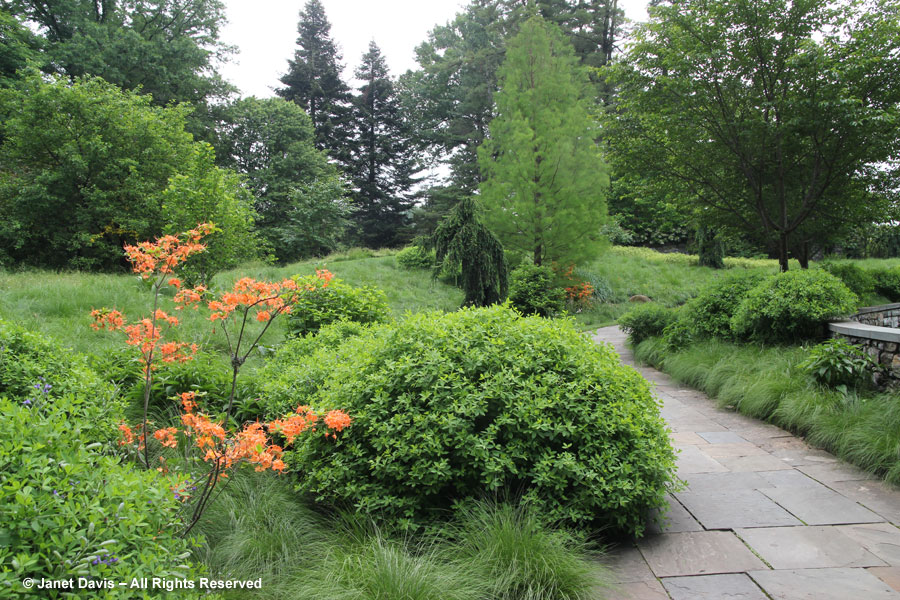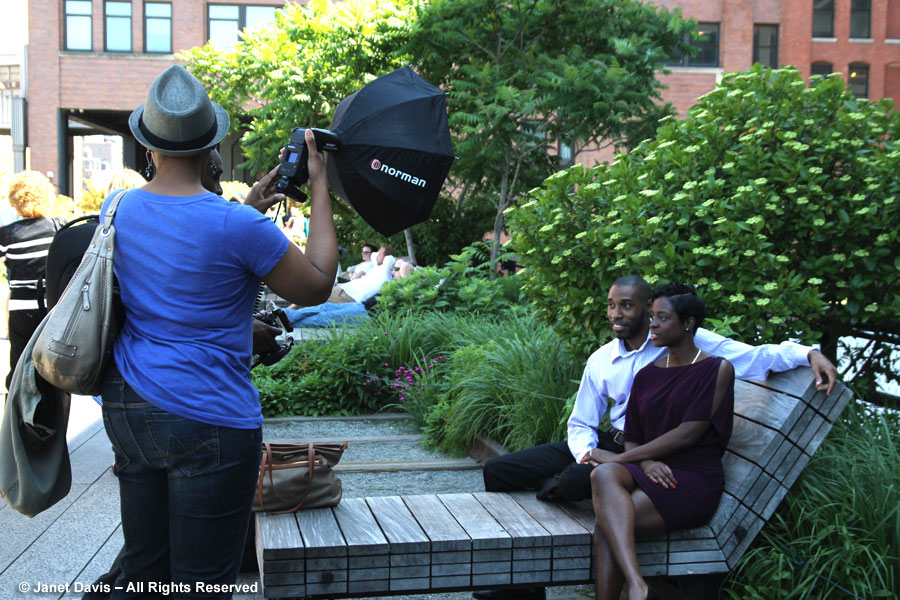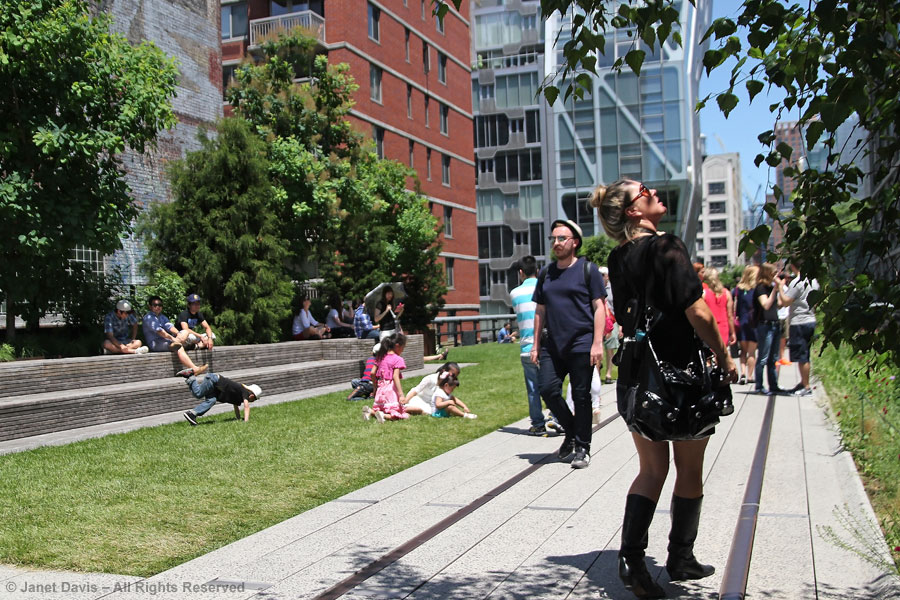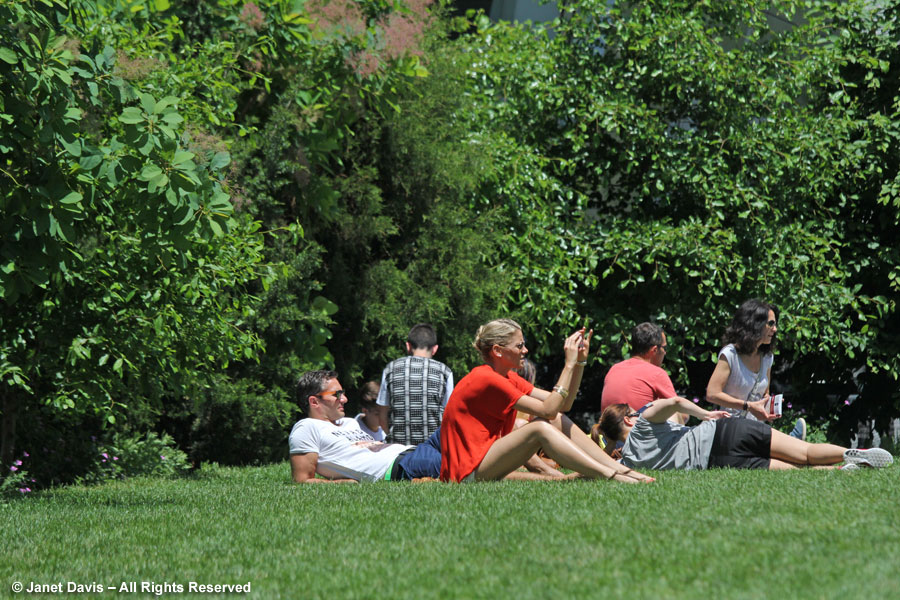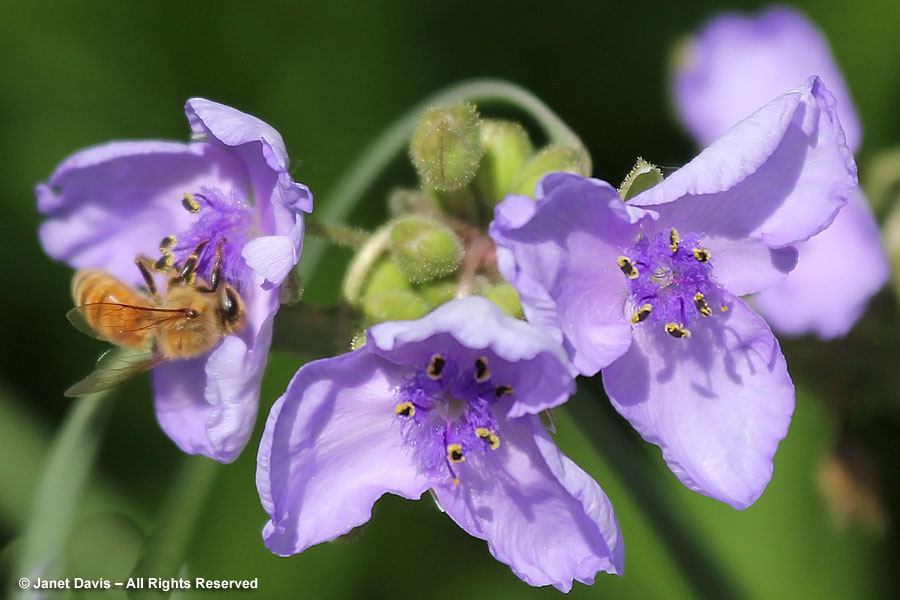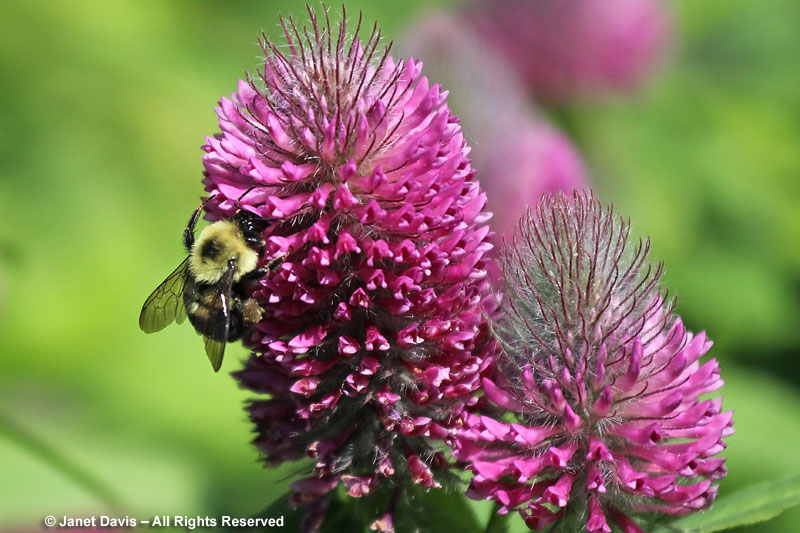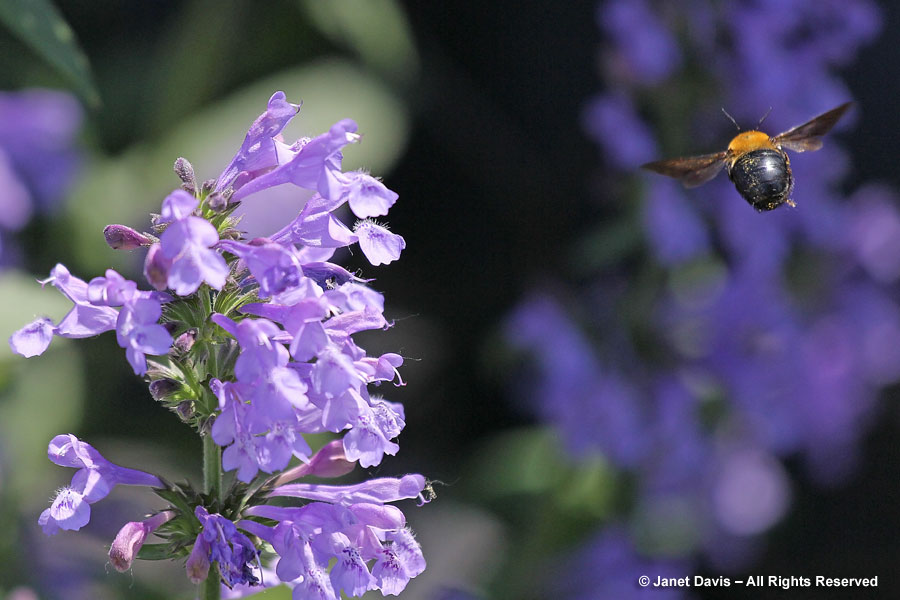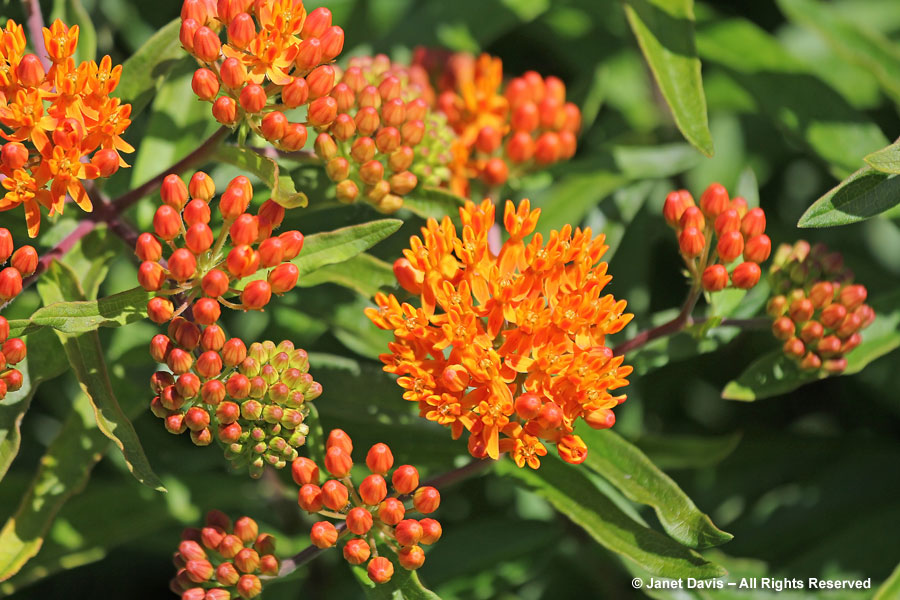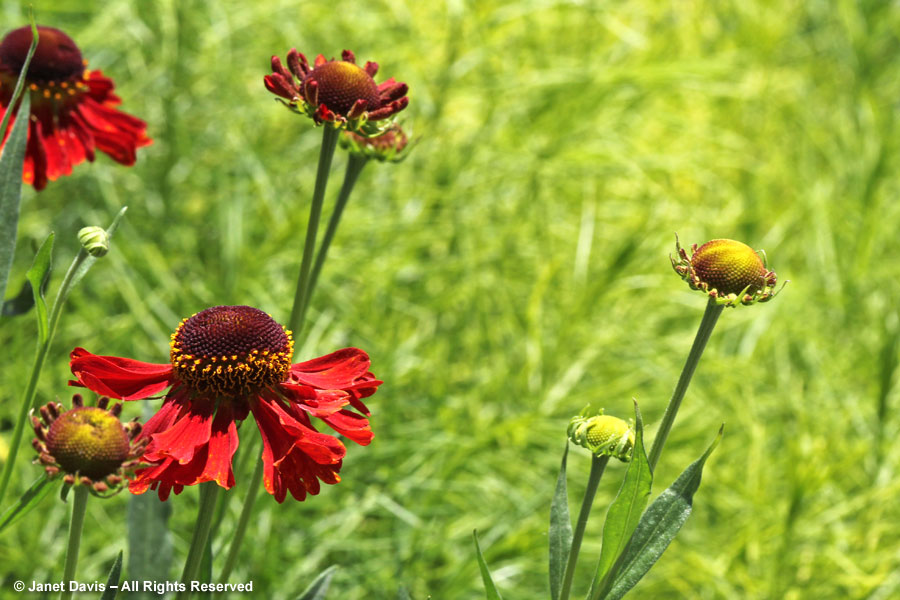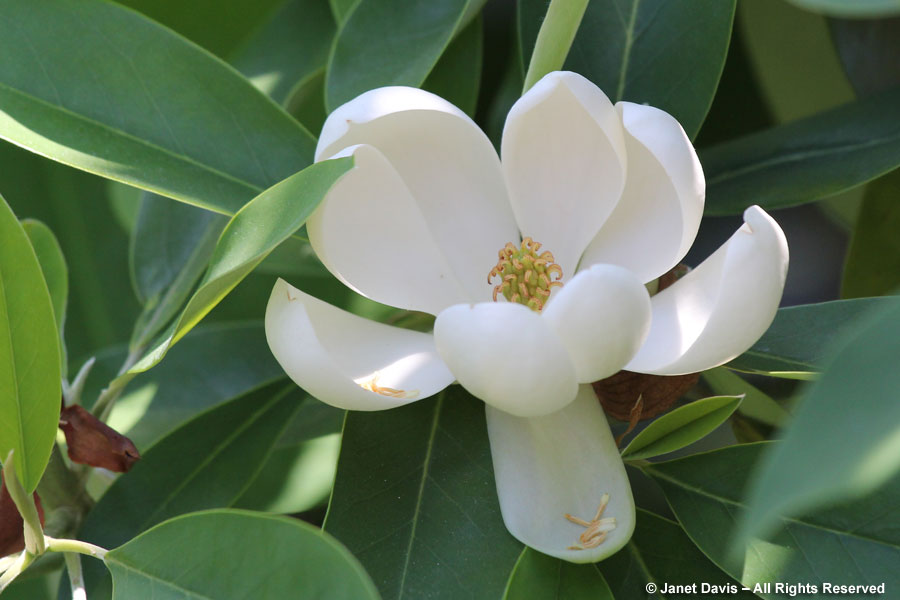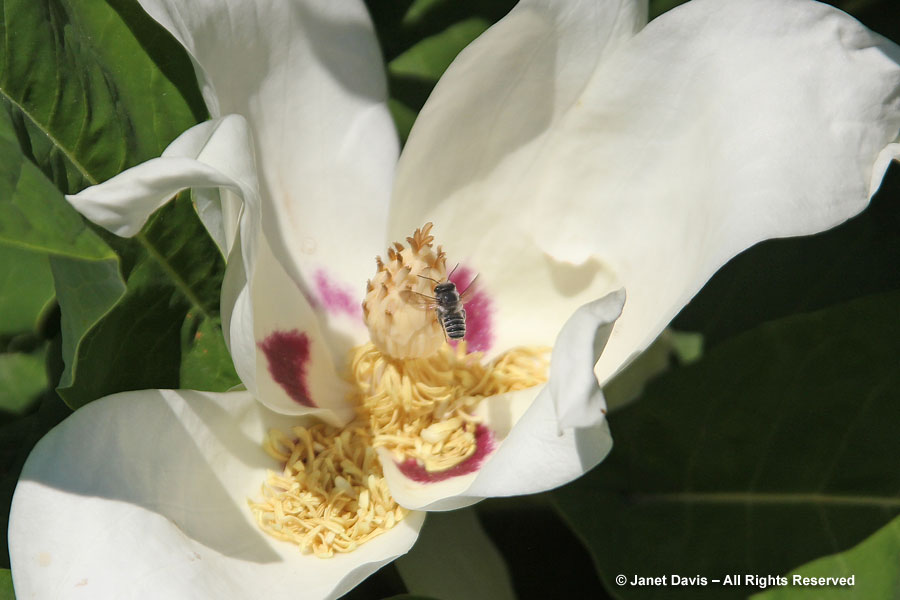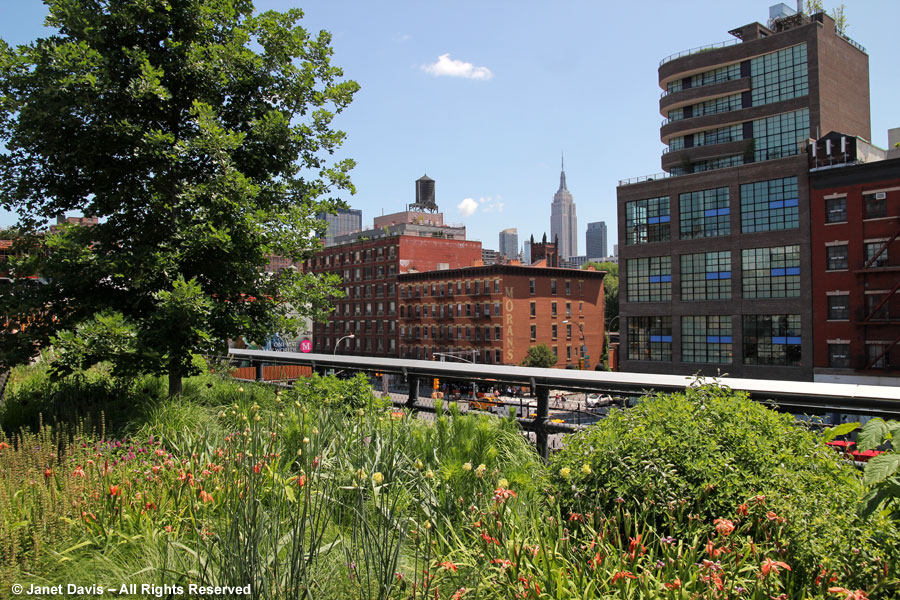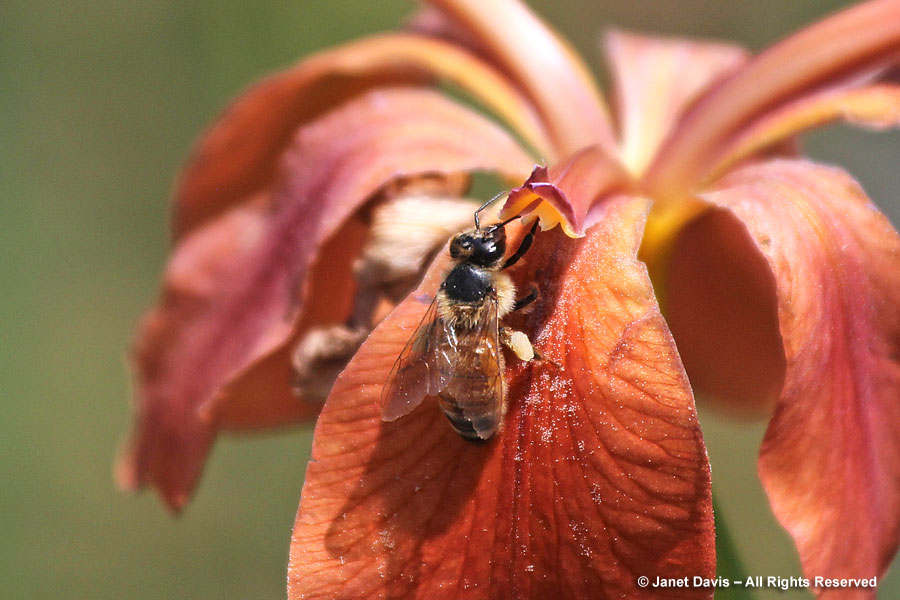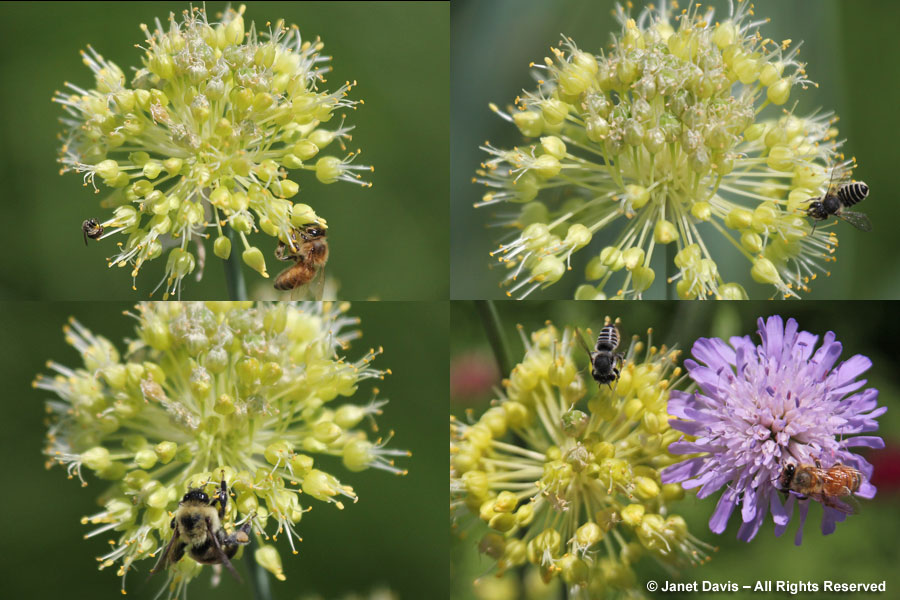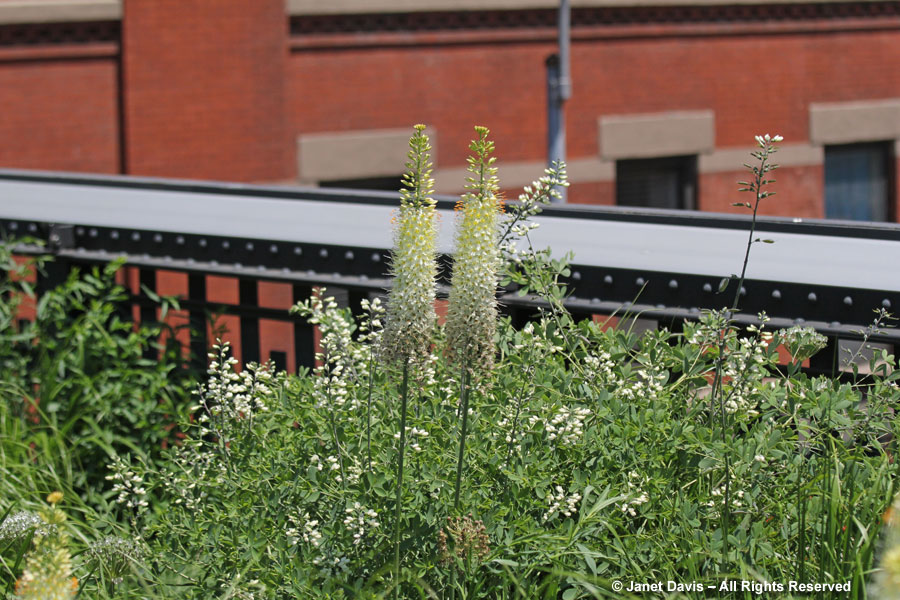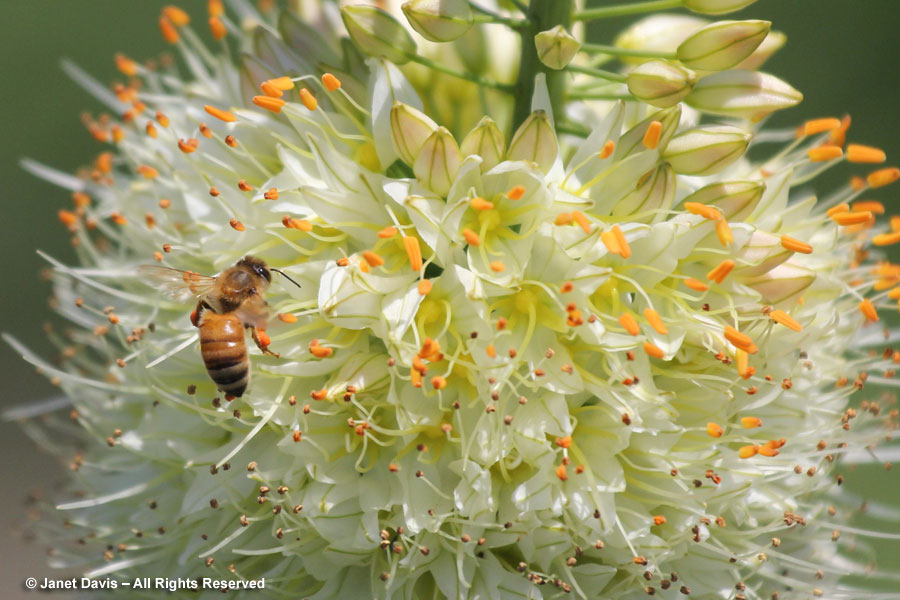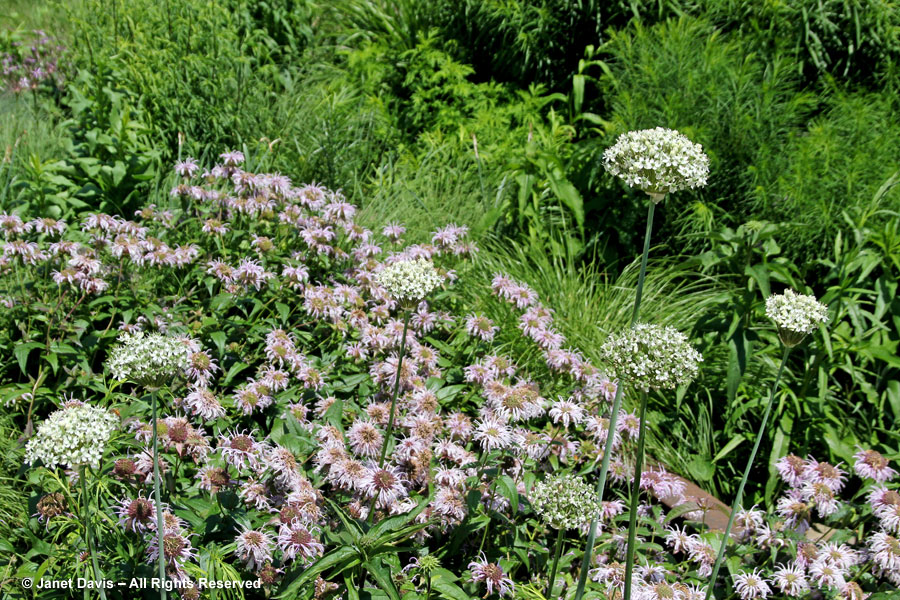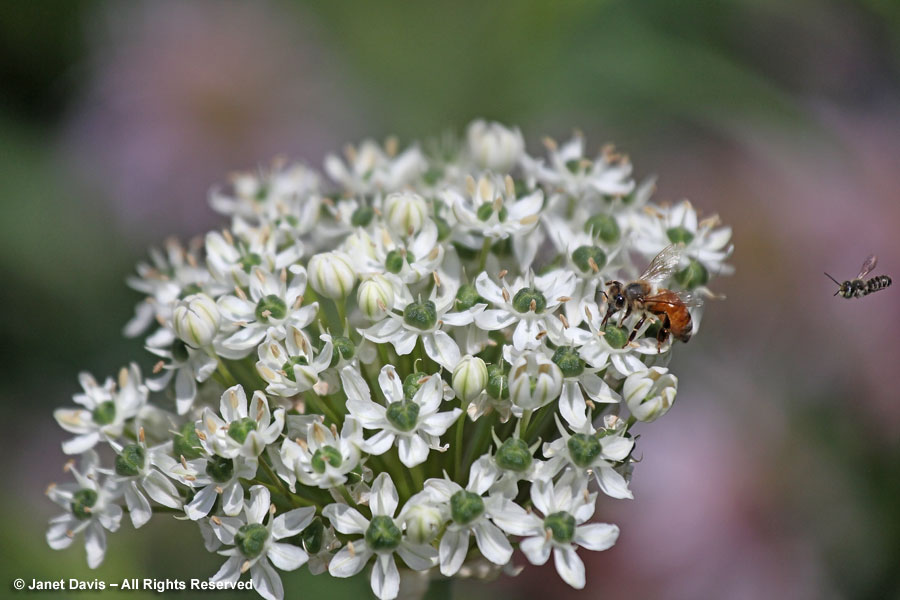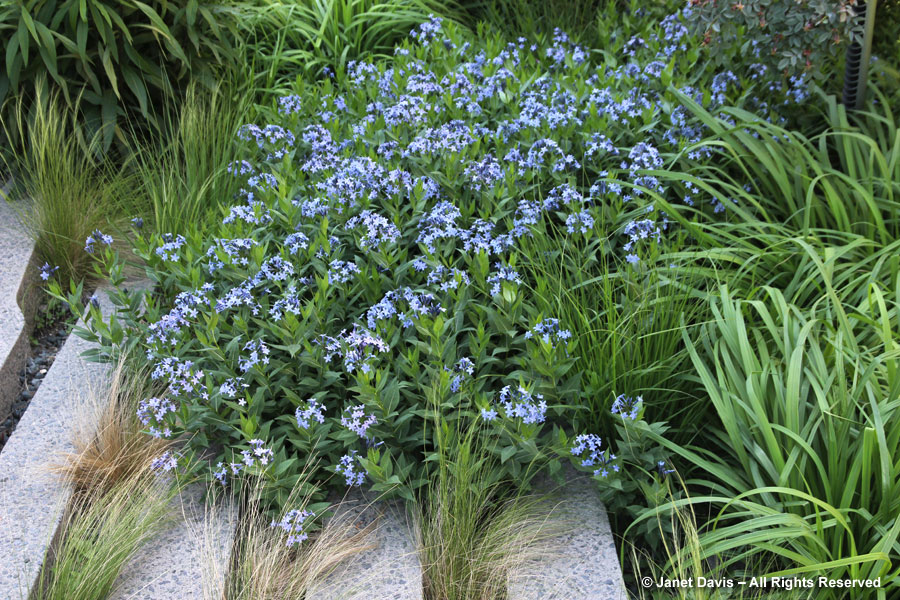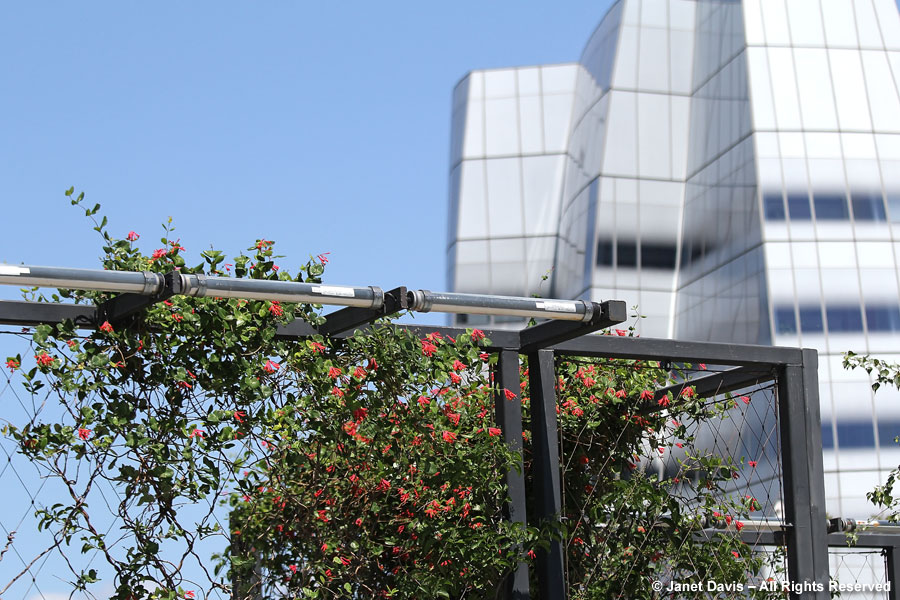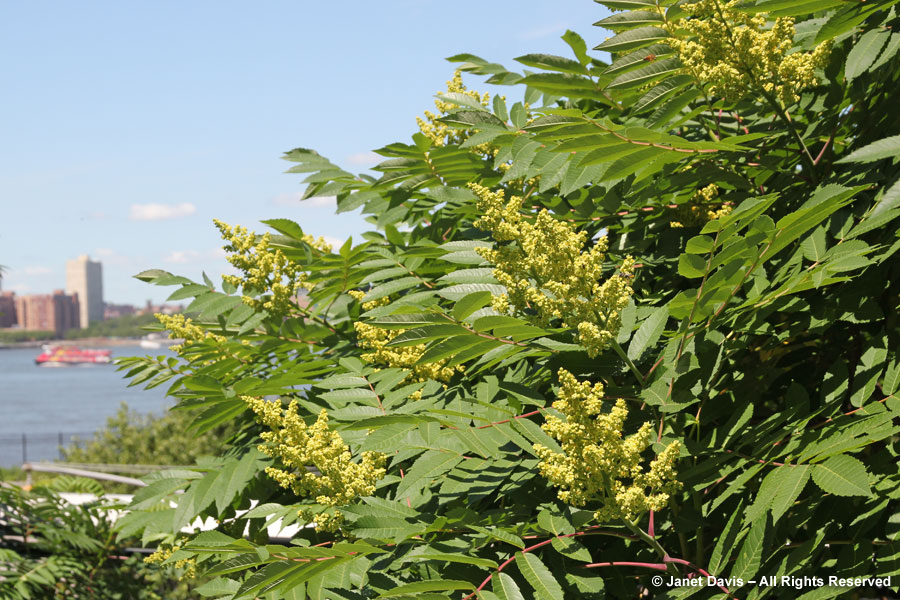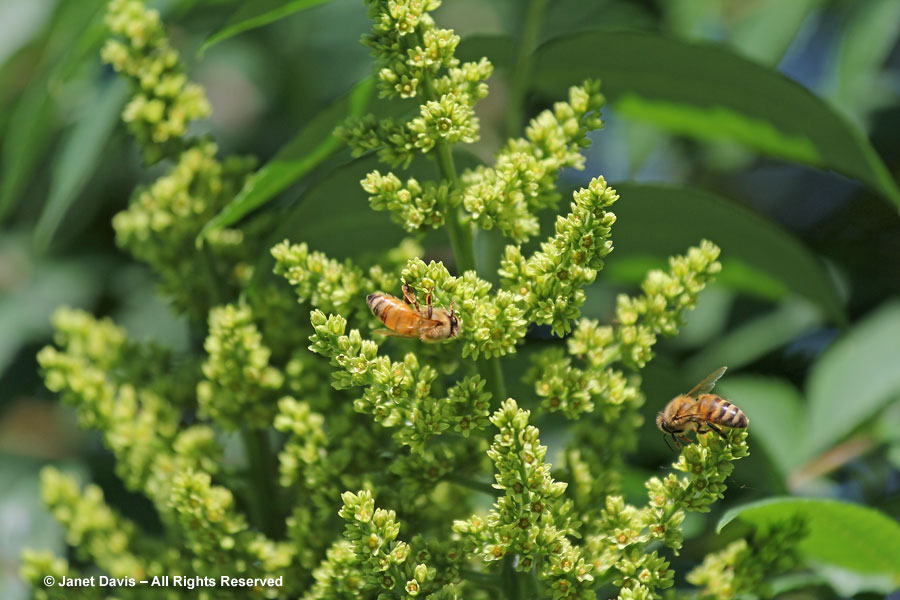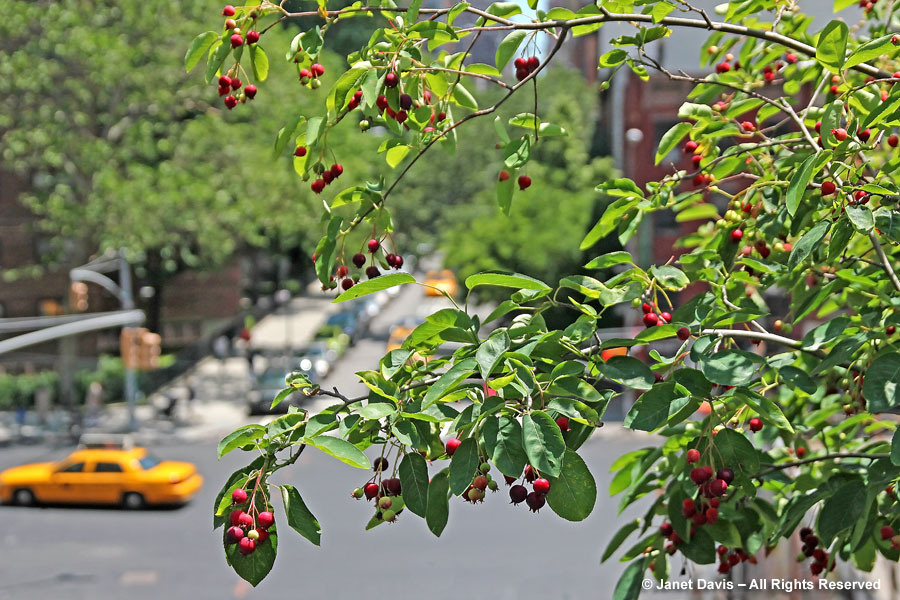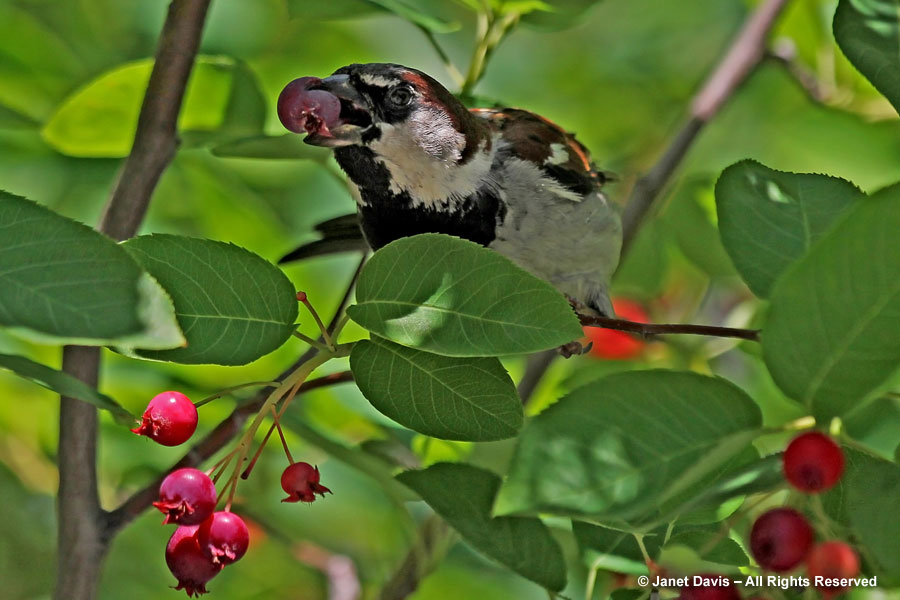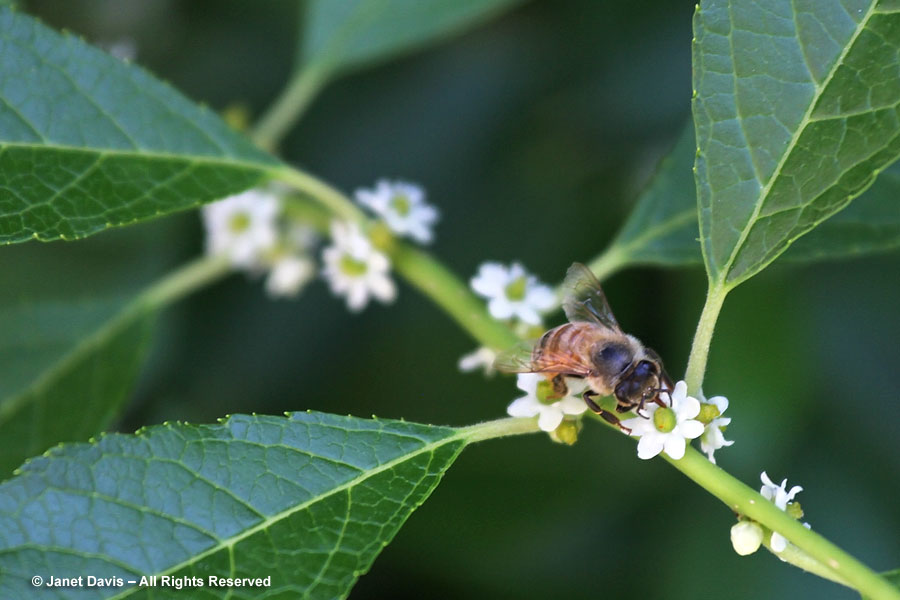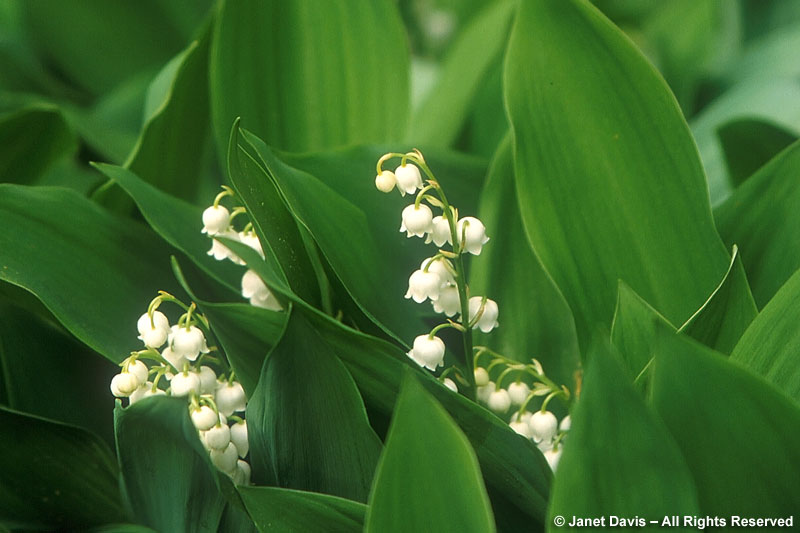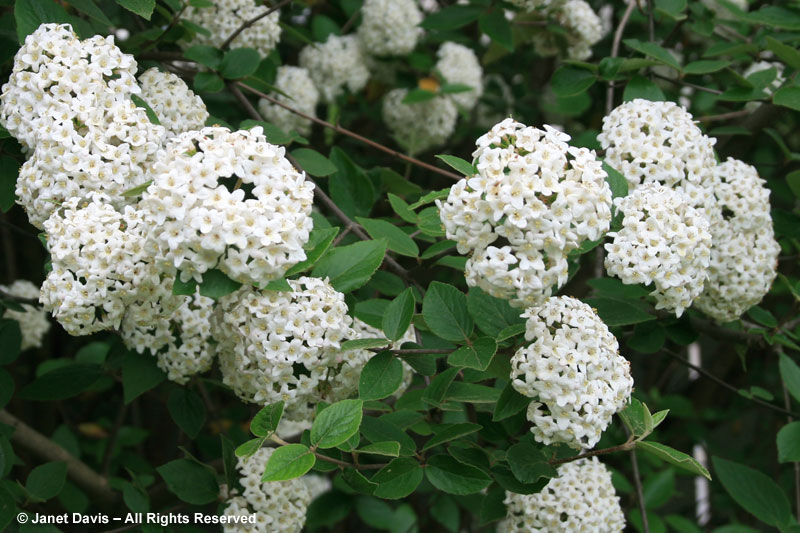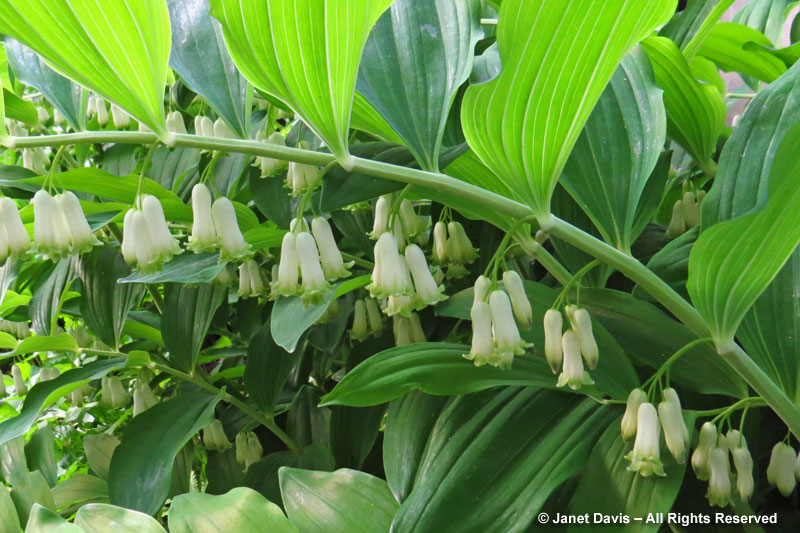If you’re rested up from the first half of our Chanticleer Garden tour, let’s keep going so we can fit in the rest of the garden before closing time.
We’ve headed out of Bell’s Woodland and up the hill through the long meadows to arrive at the Ruin Garden, which sits on the foundation of Minder House, which was the 1933 wedding gift home of Adolph Rosengarten Jr. and his wife Janet. In 1999, under Chanticleer’s former director Chris Woods, Minder House was razed and its memory evoked by landscape architect Mara Baird in a set of three stone-walled garden rooms that brilliantly capture its spirit. Let’s head through the “front door” into the Library.
A Princeton-educated lawyer, Adolph Jr. would certainly have had a rich collection of books in his library. In fact, later in life he endowed the University of Pennsylvania with a generous bequest in support of its libraries. He did not rest on the family money, but became involved in community. He was still a young man living here in the early years of the Depression when he spearheaded the movement to remove a slum in Wayne and establish a public housing project there. He also served during the Second World War as a decorated intelligence officer for the U.S. army, lending his linguistic expertise to the decoding of German messages in the top-secret Ultra spy unit at Bletchley Park, near London, England. After the war, he returned to Chanticleer, resumed his law practice, and subsequently earned two post-graduate degrees at the University of Pennsylvania – the last, at age 70, a doctorate in French military history. This remarkable man endowed Chanticleer with a foundation that continues to fund the garden to this day, with several family members on the board and the remarkable Bill Thomas serving as Executive Director and Head Gardener. Earlier, I’d persuaded Bill to stop for a moment so I could praise him here to his smiling face!
It’s fitting that that someone like Bill, whose background was in education at nearby Longwood Gardens, should run Chanticleer. For though there are no labels whatsoever to mar the beautiful landscape, education is very much a focus here, as Adolph Rosengarten Jr. stressed in his will. Throughout the gardens, there are artful boxes containing comprehensive plant lists available for a $2 fee; the lists are also offered free of charge online. This is the most painstaking garden inventory, each section the responsibility of a small staff of full-time horticulturists who have worked at Chanticleer since the garden was opened to the public in 1993, three years after Adolph Jr’s death.
But back to the Ruin. This is the cleverly-named Pool Room, with faces by sculptor Marcia Donahue partly submerged in the raised pool.
And this long, black granite banquet “table” in the Great Room is a brilliant water feature that reflects the plants within and outside the Ruin.
Head out of the Ruin and you find yourself at the top of the sprawling Gravel Garden. Walk down the steps and you’ll see hundreds and hundreds of plants that thrive quite happily with little water. I could gladly have spent all day in this garden.
Shown below are a few of the Gravel Garden’s jewels. Clockwise, from upper left: Spanish poppy – Papaver rupifragum; Anthemis tinctoria ‘Susanna Mitchell’ & Orlaya grandiflora, Eremurus x isabellinus ‘Cleopatra’, and Viscaria oculata ‘Blue Angel’.
The reality of gravel, of course, is that weeds love to grow in it as much as the lovely, welcome self-seeders. Here, with her back to me, is the Gravel Garden’s talented gardener Lisa Roper (also Chanticleer’s excellent photographer) and intern Kirsten Liebl, working to keep the gardens weed-free.
This path through the Gravel Garden features, at left, pale penstemon (P. pallidus) and tall yellow Carolina bushpea (Thermopsis villosa). At right is airy white Orlaya grandiflora with chartreuse Sedum rupestre ‘Angelina’ and Crinum bulbispermum. At the rear is Yucca rostrata, a rare (for Pennsylvania) native of the hot southwest desert.
This arbor offers welcome shade and a good view of some of the Gravel Garden and the Rock Ledge beyond.
Look at the profusion of colour on the Rock Ledge leading down to the Pond Garden. Monet would have been delighted to set up his easel here! The dark purple salvia is Salvia nemorosa ‘Caradonna’. Other flowers include red corn poppies (Papaver rhoeas), orange ‘Cleopatra’ foxtail lilies (E. x isabellinus) and bright-pink (Silene armeria)
Now we’re down at the linked ponds, with this delicious crescent of ‘Caradonna’ meadow sage, silvery Artemisia ludoviciana and a row of bobbing ‘Lucy Ball’ alliums. More yellow Thermopsis villosa rises on the other side of the pond. The Pond Garden and nearby Asian Woods are the domain of gardener Joe Henderson, who waves from a cart as he drives by.
There are lots of big koi in the pond and one blows bubbles as it swims past.
‘Pink Sensation’ waterlilies grace the largest pond. Like the other three, it’s surrounded by a diverse roster of marginal aquatic plants.
Variegated sweet flag (Acorus calamus ‘Variegatus’) makes a lovely scrim at the edge of the pond, where its roots can remain nice and wet.
The Pond Garden features many beautiful irises, but none lovelier than Iris spuria ‘Cinnabar Red’.
This pondside path is flanked by deep beds of luscious June perennials.
Candelabra primroses thrive in the damp primrose meadow adjacent to the ponds.
More moisture-loving beauties grace the bog near the ponds including, clockwise from upper left: pitcher plants (Sarracenia leucophylla) and (Sarracenia flava); purple marsh orchid (Dactylorhiza spp.); and pink ladyslipper (Cypripedium reginae).
And where there are ponds, there are always red-winged blackbirds keeping an eye out for visitors that come too close to their nests.
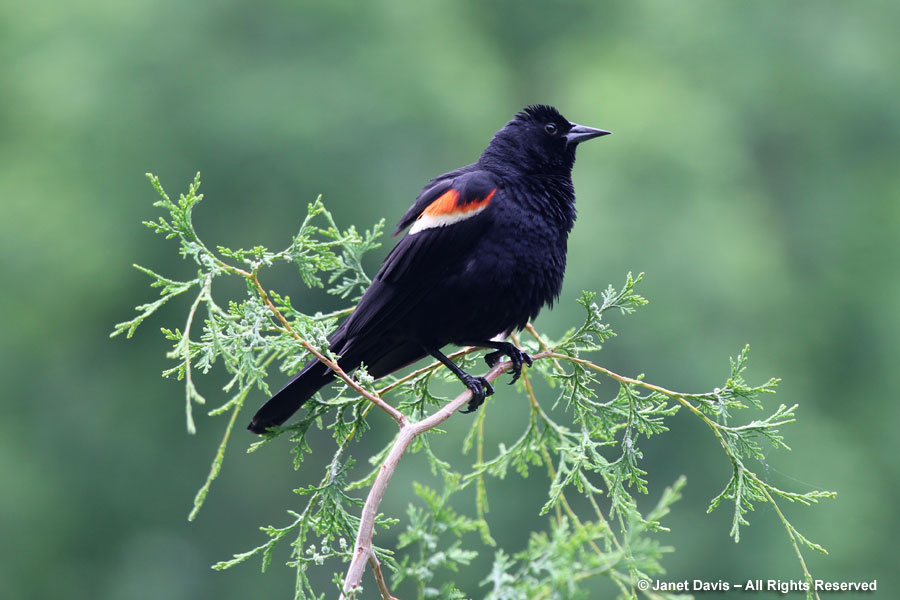
On my way from the ponds into the Asian Woods, I pass a large bed featuring this lovely vignette. So quietly perfect: golden catalpa (C. bignonioides ‘Aurea’) underplanted with golden-striped bamboo (Pleioblastus auricoma) with a swath of ‘Dallas Blues’ switch grass in front (Panicum virgatum).
Now we’re in the cool Asian Woods, heading toward that lovely bridge. Look at all the trilliums – how lovely it must have been in May!
Check out the drifts of ‘Ebony Night’ black mondo grass (Ophiopogon planiscapus) and dwarf goatsbeard (Aruncus aethusifolius). What beautiful textures here — I need another hour, at least. Sadly, there’s just enough time to turn around and head out again.
I pass the fun, leopard-patterned chairs that sit on the great lawn.
Gazing up through the sweeping border beneath the Gravel Garden, the main house looms ahead.
Just one glance back at the brilliant combination of ‘Flamenco Mix’ red-hot pokers (Kniphofia uvaria) with ‘Lucy Ball’ giant alliums. More Salvia nemorosa ‘Caradonna’ here, plus white oxeye daisies. Genius! Thank you, Lisa Roper.
On the way up to the house, I note the sinuous, maze-like Serpentine, intended to celebrate the beauty of agricultural crops. This summer, it’s planted with waving, swishing – and, yes, beautiful – winter rye (Secale cereale).
And now I’m at the back of the main house, once the home of Adolph Rosengarten Sr. and his wife Christine. Earlier in spring, this wildflower lawn would have been filled with daffodils, which are now ripening in the long grass.
Let’s take a walk along the terrace, past the clay urn draped with ‘Buttercup’ golden ivy (Hedera helix), and all the other brilliant, gold-leafed plants that light up this space even on a cloudy day. And don’t they look superb with the mauve alliums?
Each of the many urns and pots on the terrace is exquisitely designed. This one features a simple mix of variegated Japanese sedge (Carex oshimensis ‘Evergold’), Winter Orchid wallflowers (Erysimum) and Side Show Copper Apricot African daisies (Osteospermum). The gold-leafed shrub behind is a ‘Golden Sunshine’ willow (Salix sachalinensis).
The swimming pool looks so cool and welcoming. In fact, I did take a refreshing swim in this pool on a hot summer evening several years ago, when Chanticleer hosted the awards dinner at the annual symposium of the Garden Writers Association. They even provided bathing suits for those of us who’d forgotten ours at home! What fun (there might have been a little wine consumed…..) It was later in the season then, so the wonderful roses like ‘Dr. Huey’ and pink ‘Eglantyne’ here weren’t in bloom.
Big agaves (A. americana) pick up the aqua colour of the water and the copper rooftop of the poolhouse.
Each end of the swimming pool terrace features delphiniums and other classic English-garden-style perennials.
But it’s closing time, finally, and I float back to my car on a lovely cloud of euphoria. Together, Adolph Rosengarten Jr.and the board and staff have succeeded brilliantly in making Chanticleer feel like the most welcoming of private homes – with the best gardens ever. Thank you!
Chanticleer is open 10:00 a.m. to 5:00 p.m. Wednesday through Sunday. The garden is also open on Friday evenings until 8:00 p.m. from May through Labor Day. The 2014 season begins on April 2nd and ends on November 2nd. Check the website for more.

